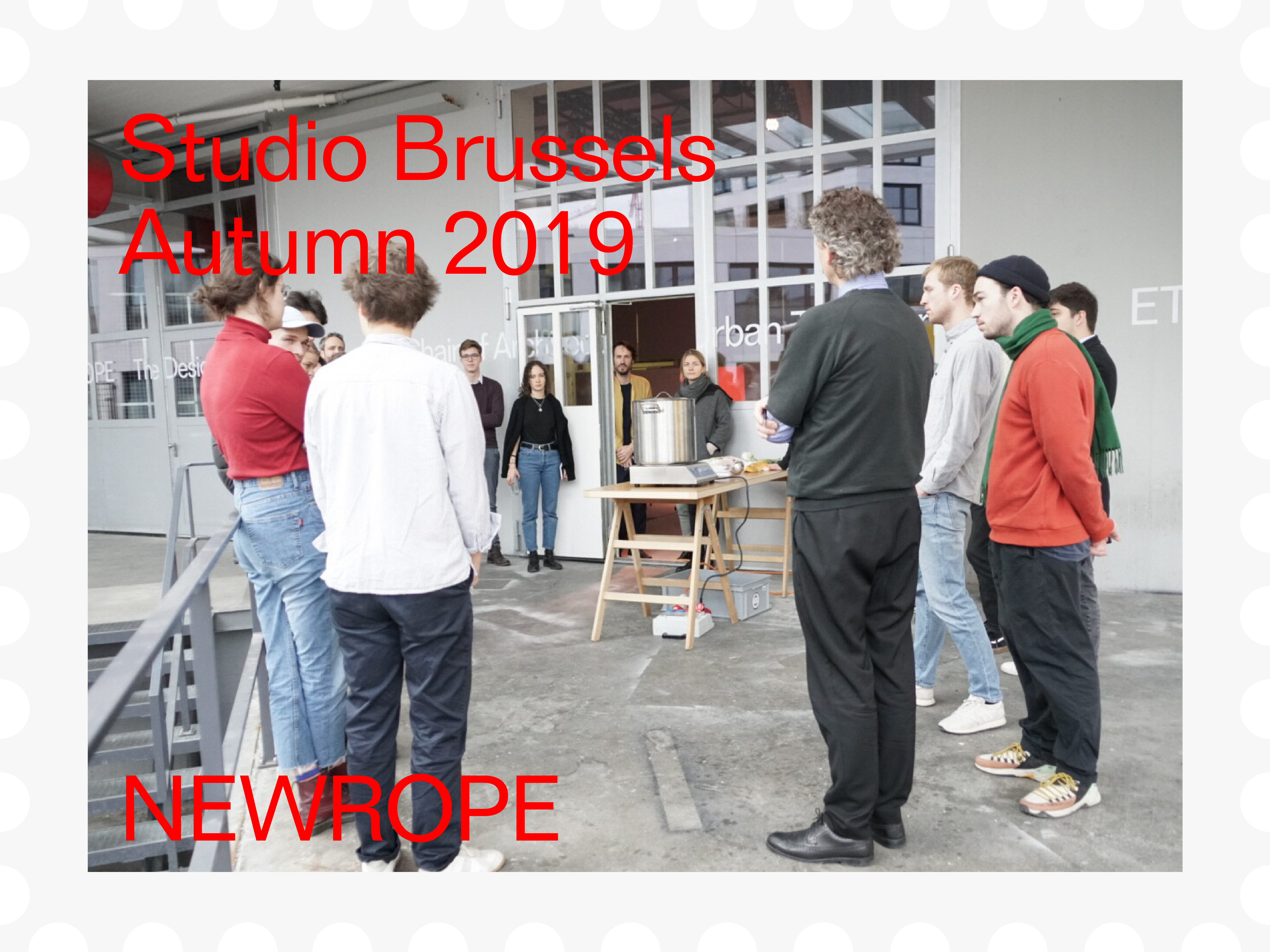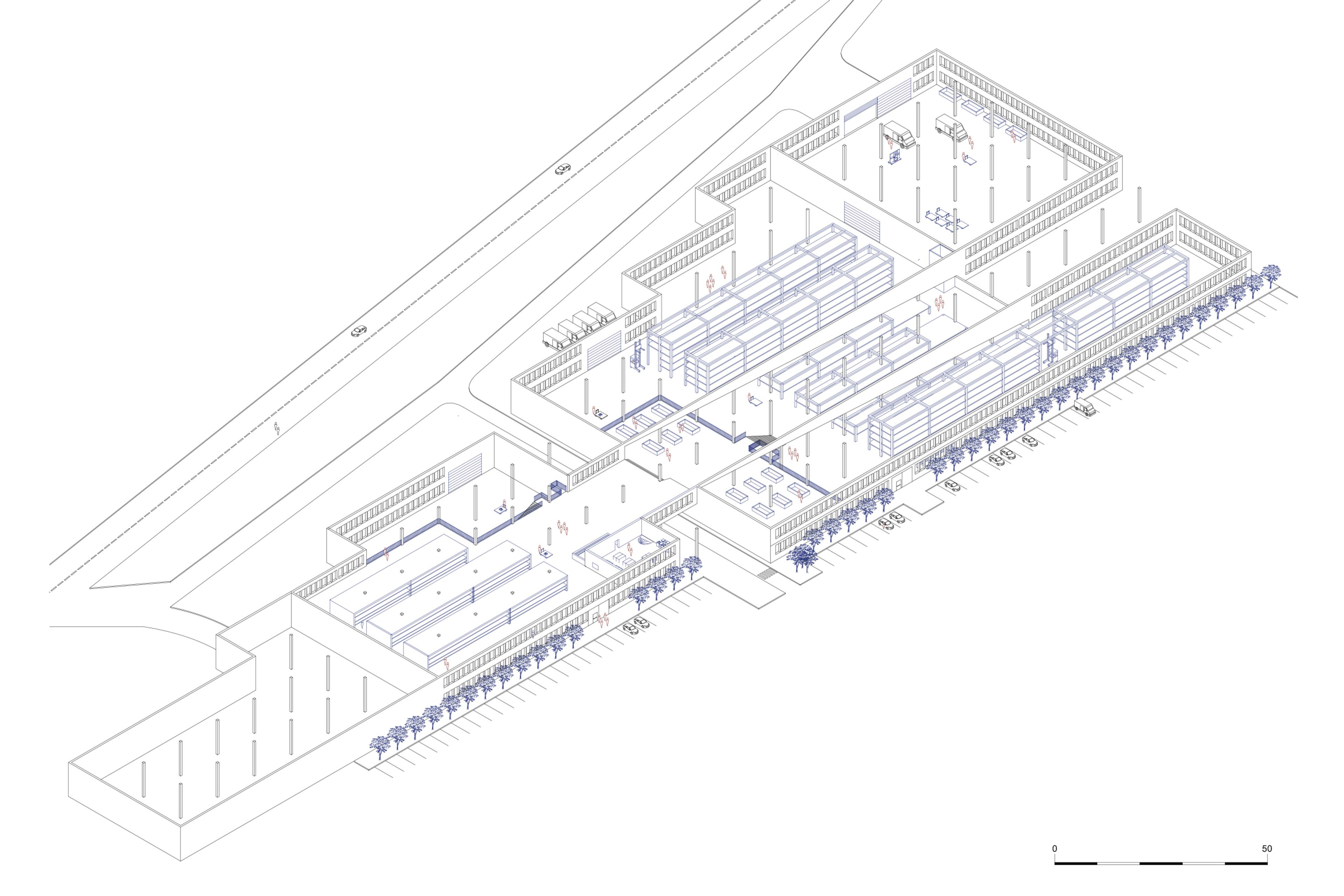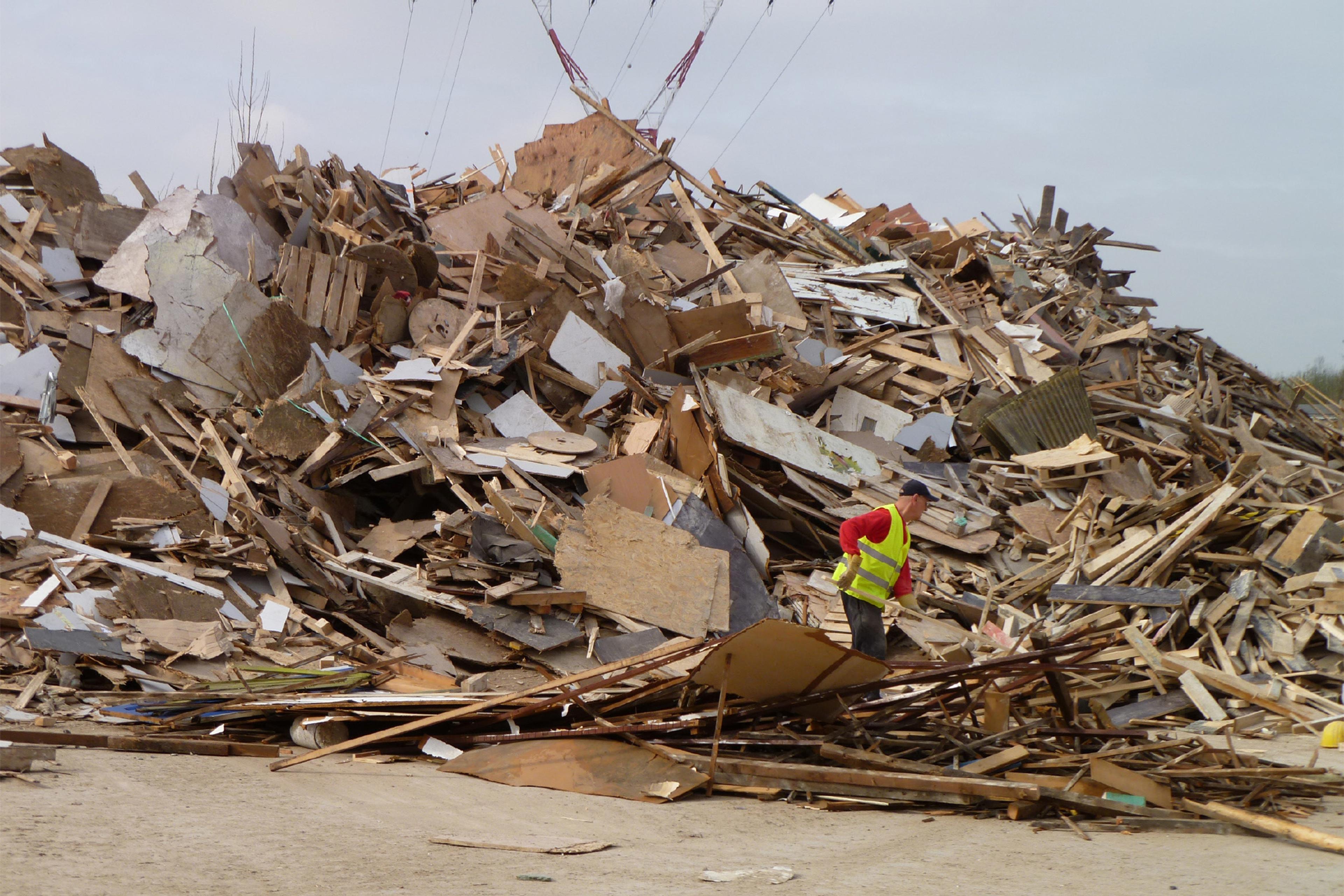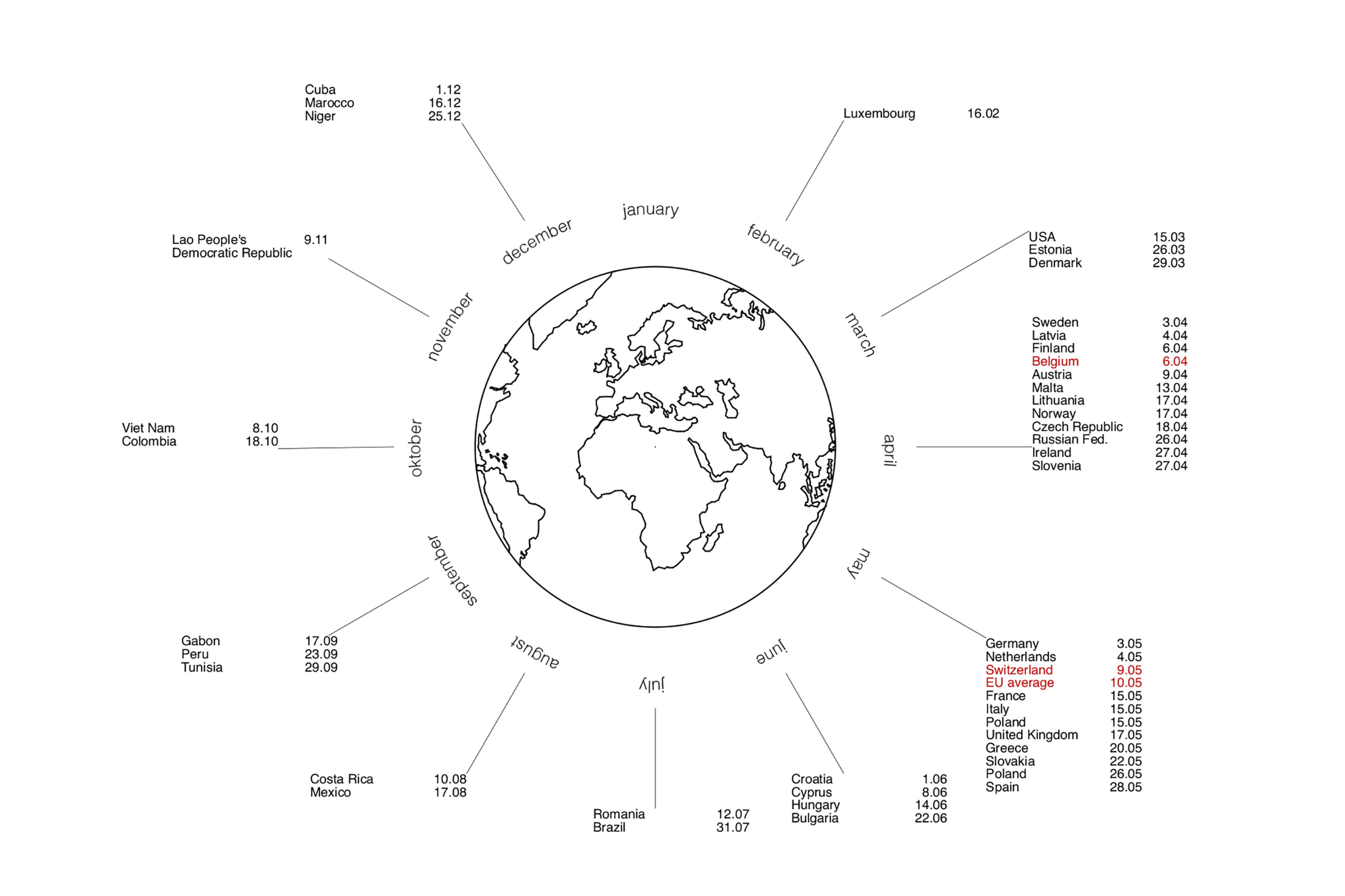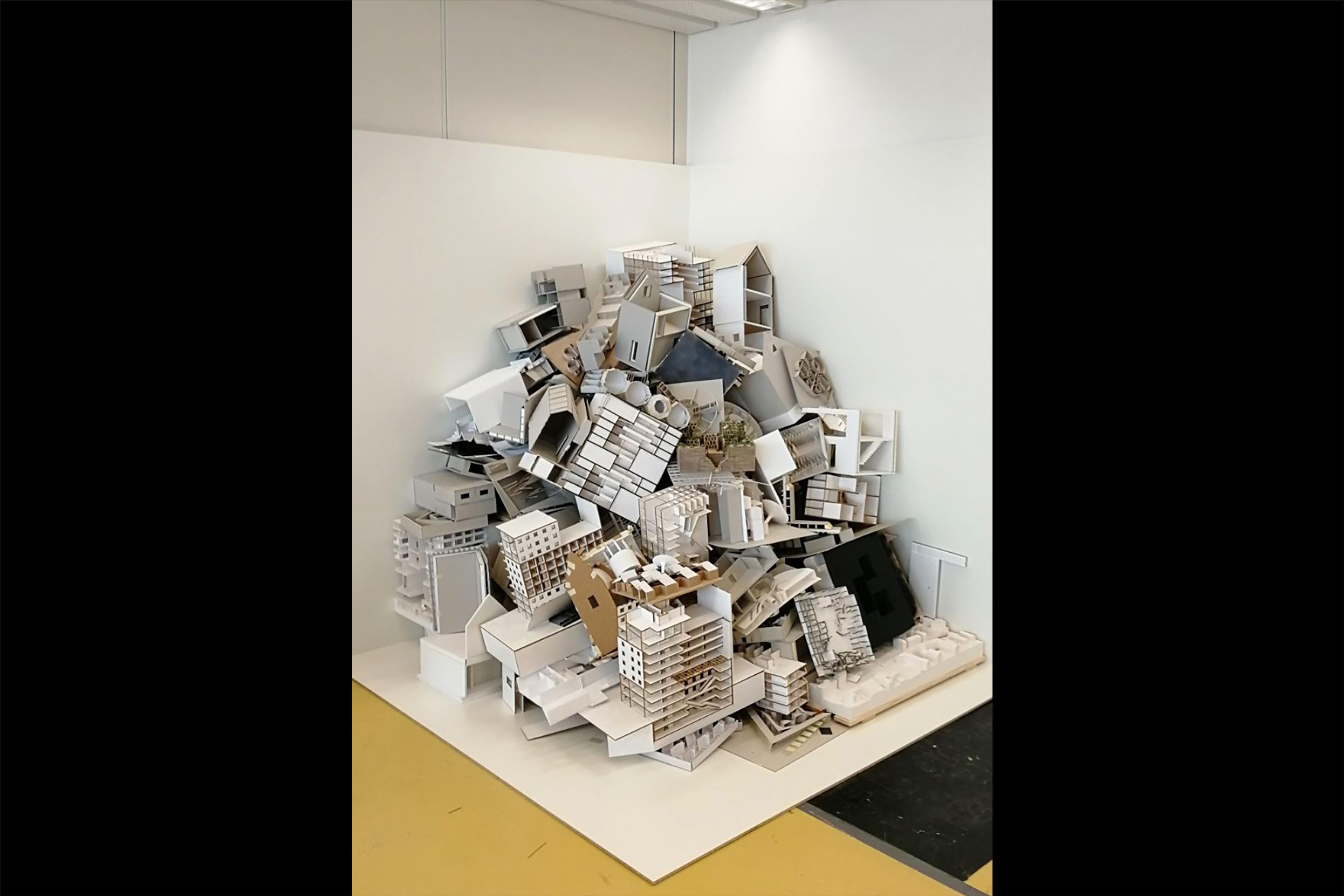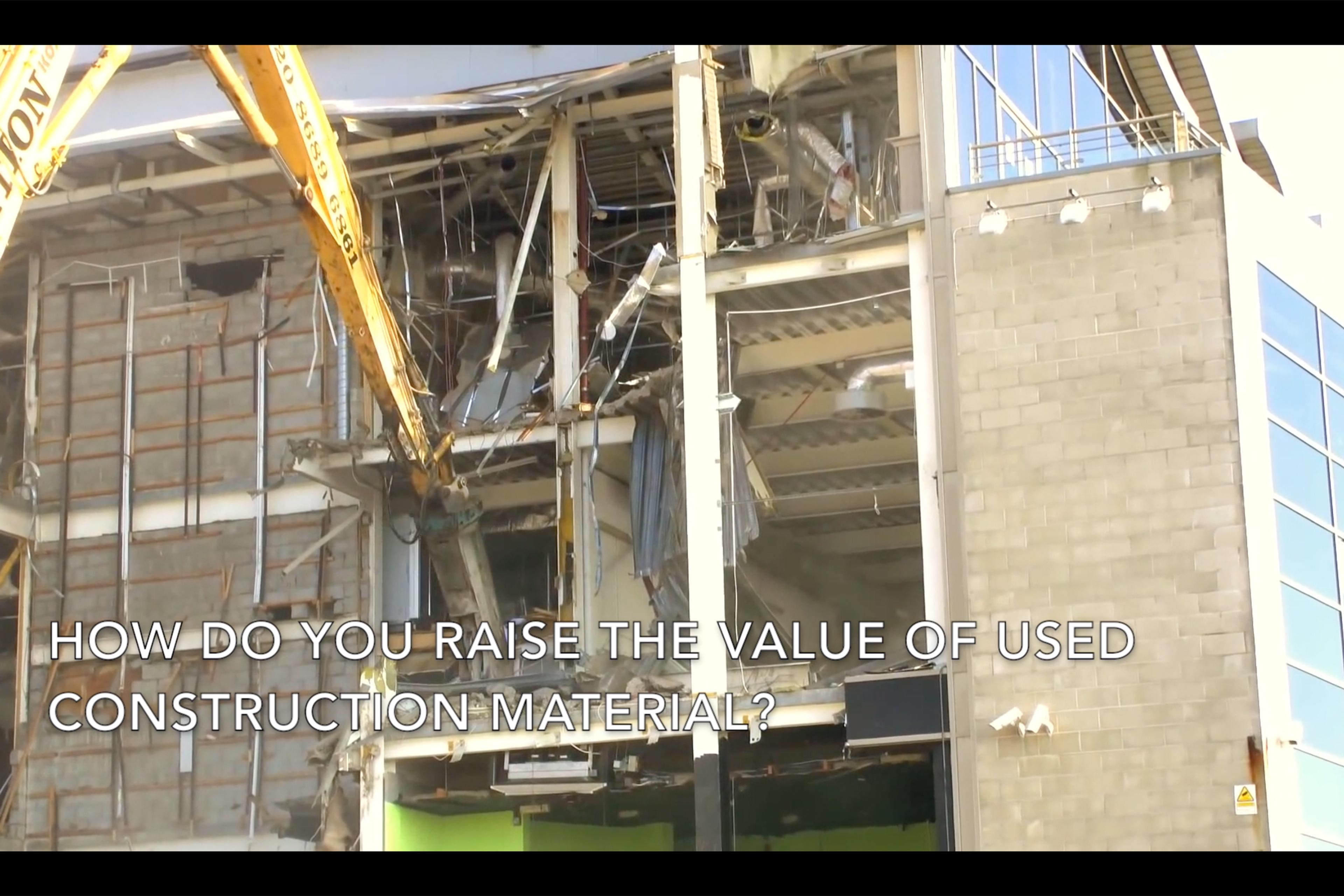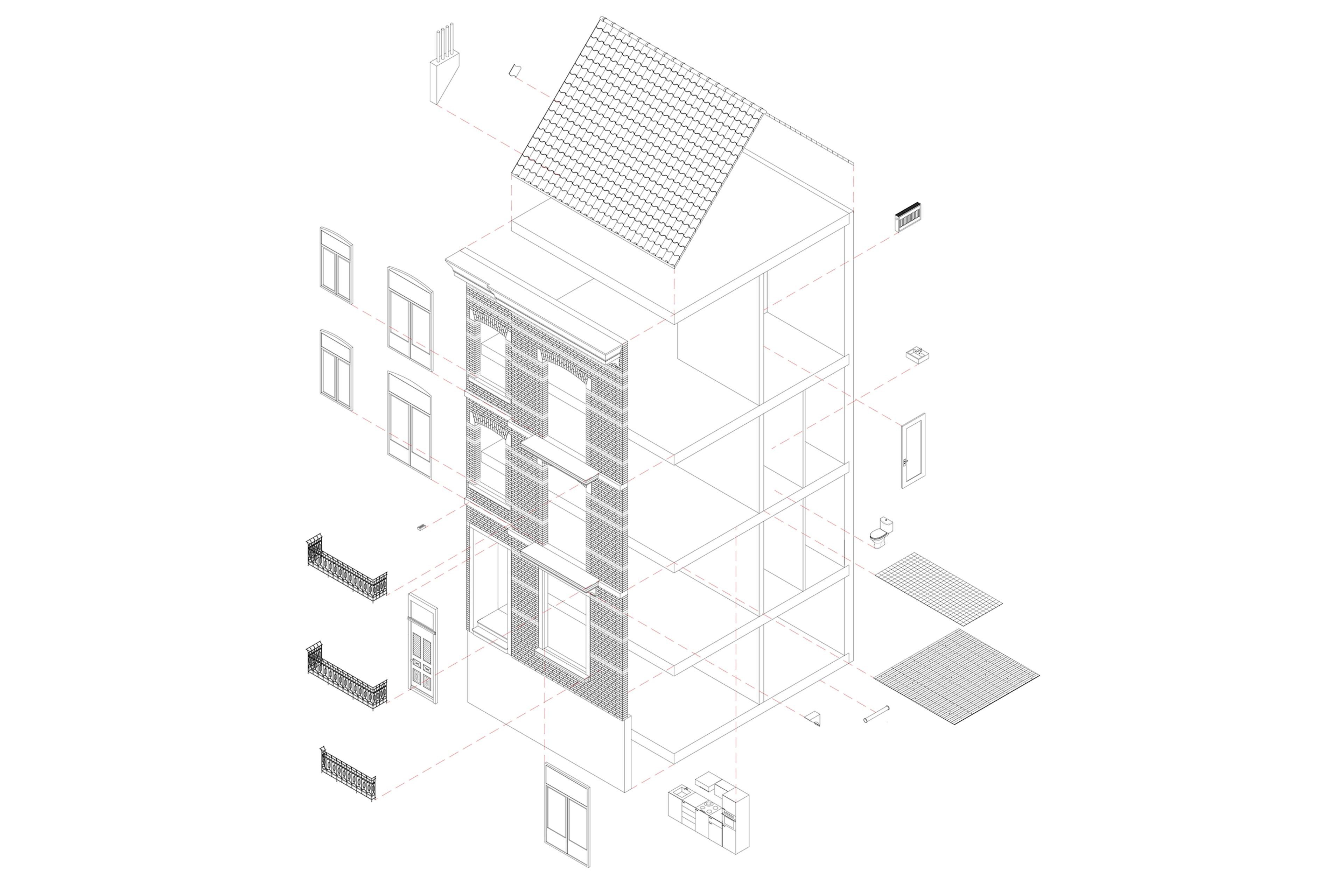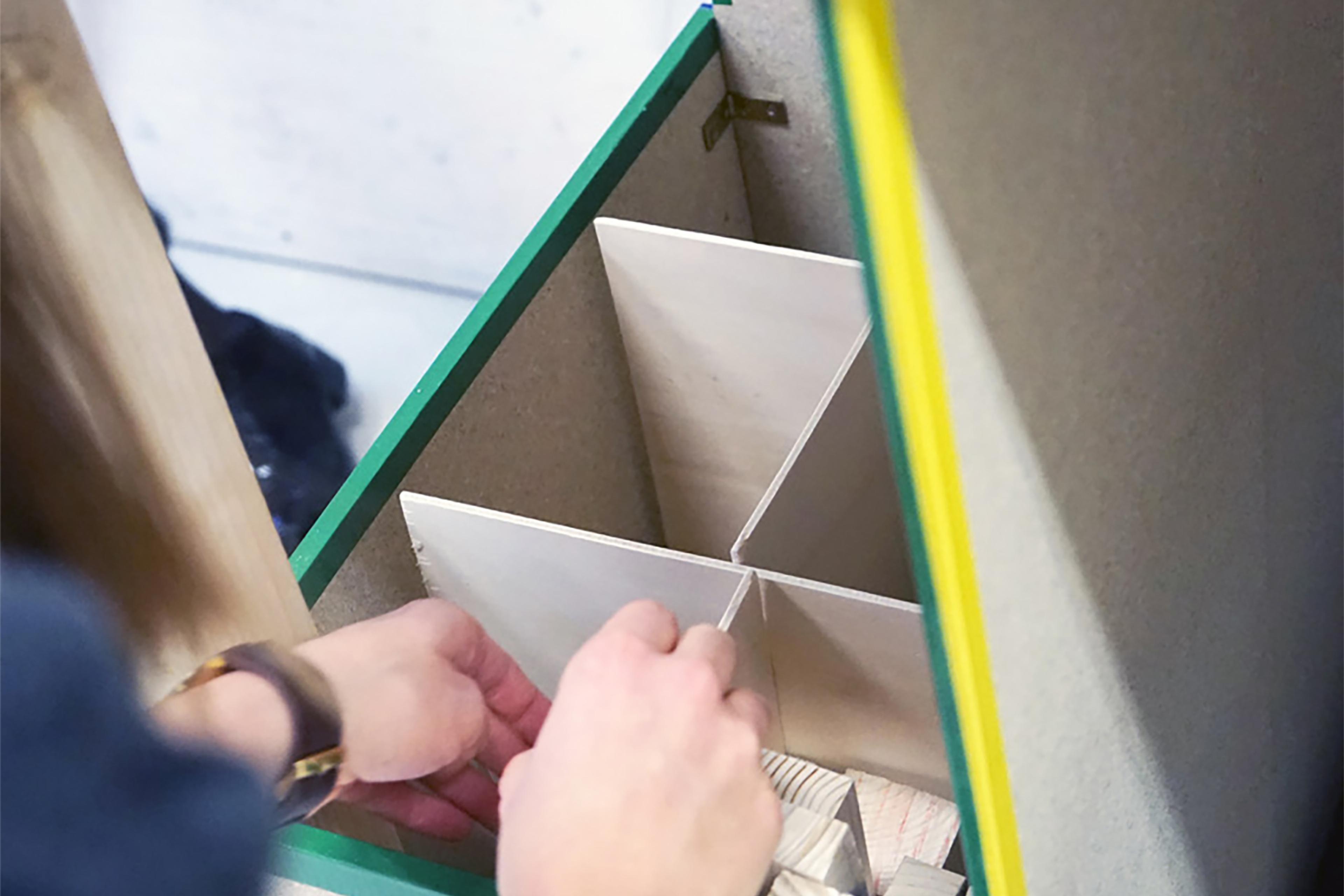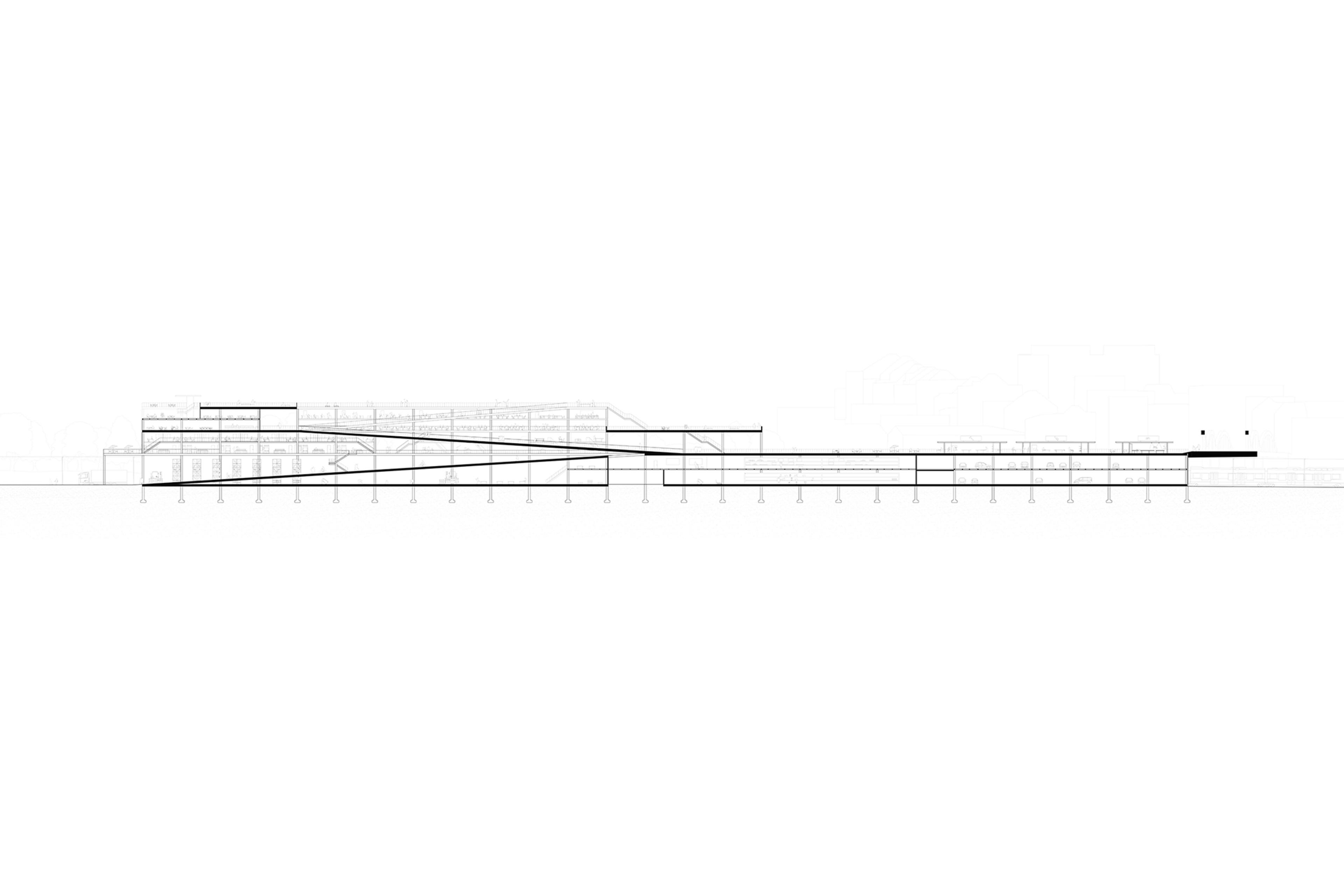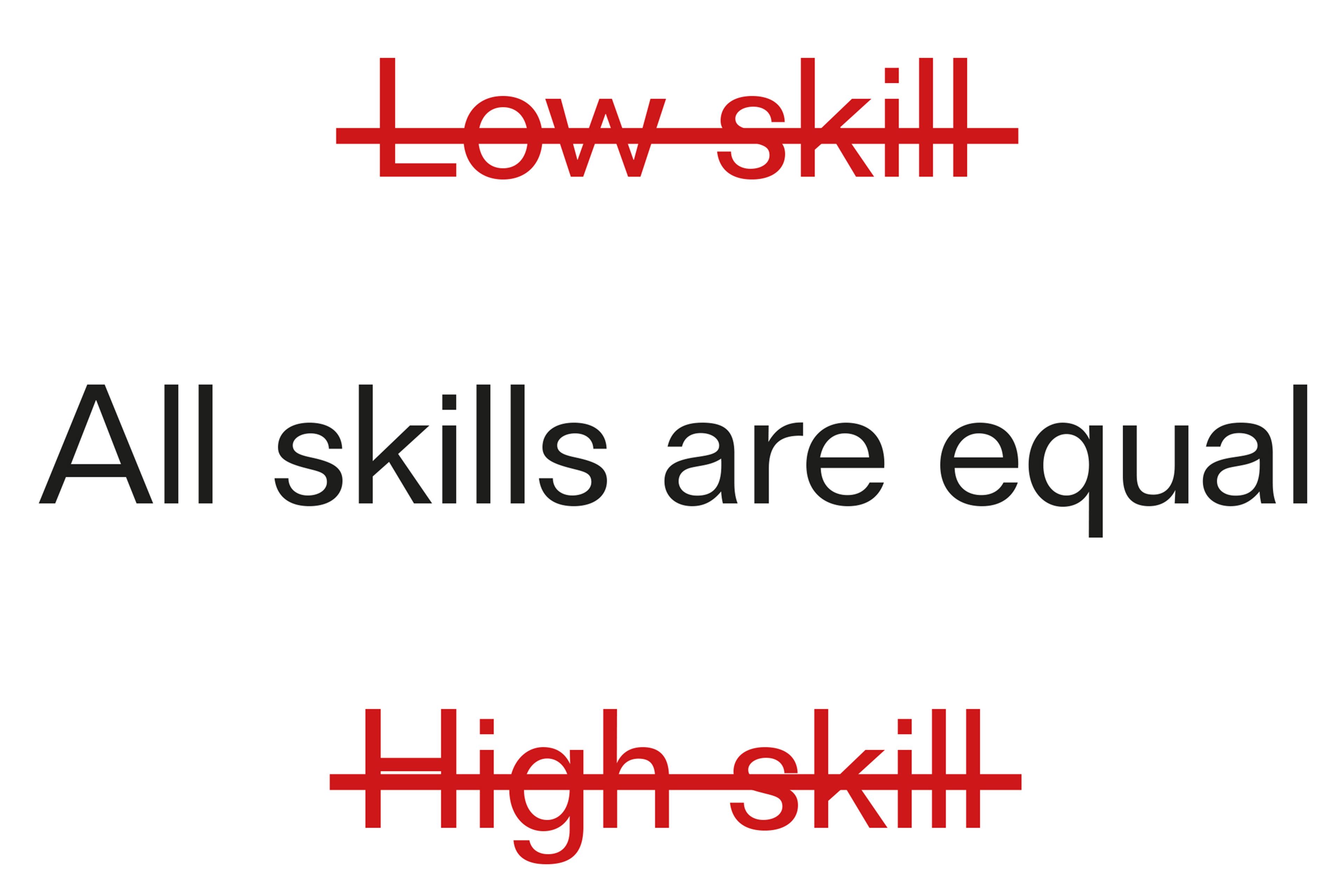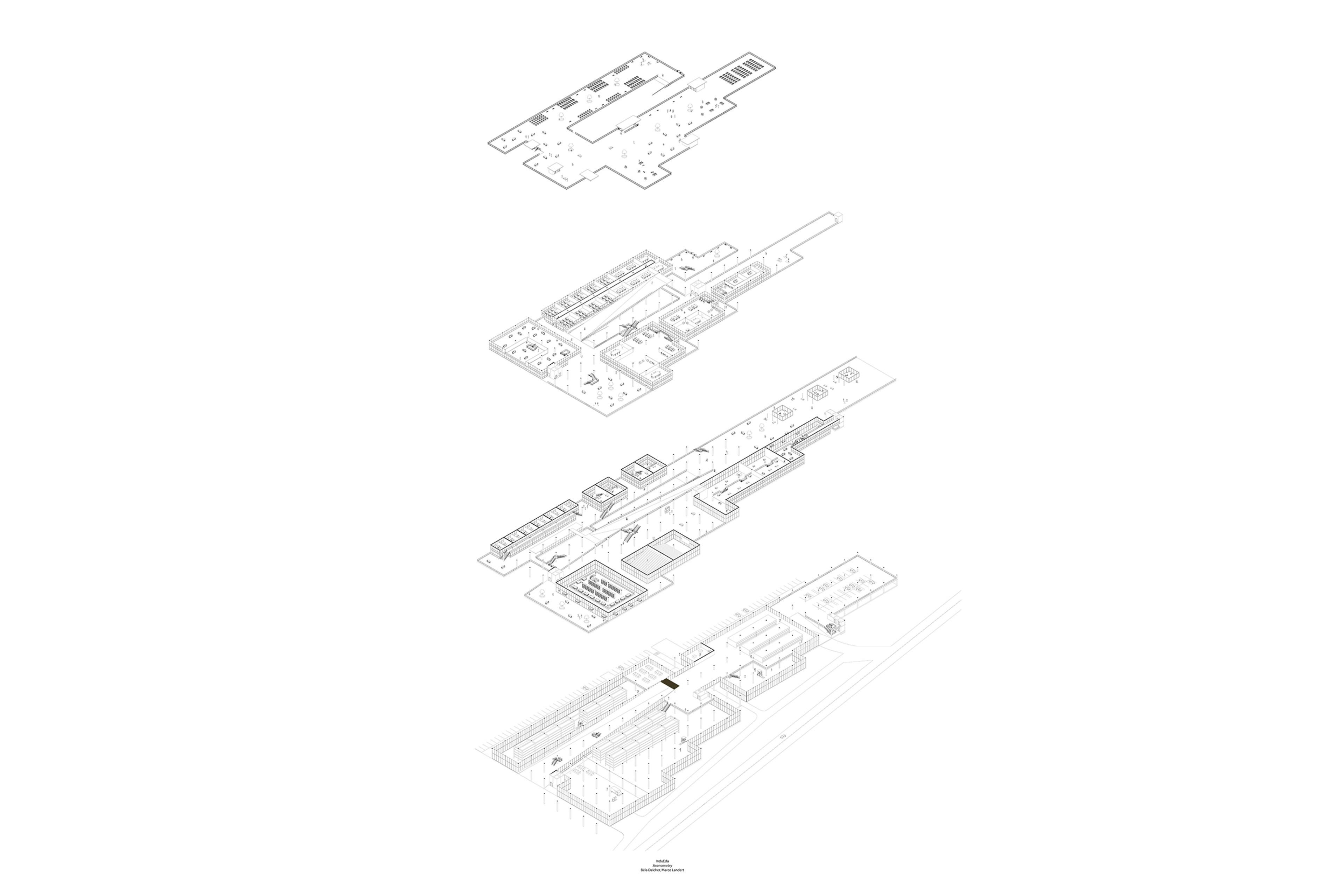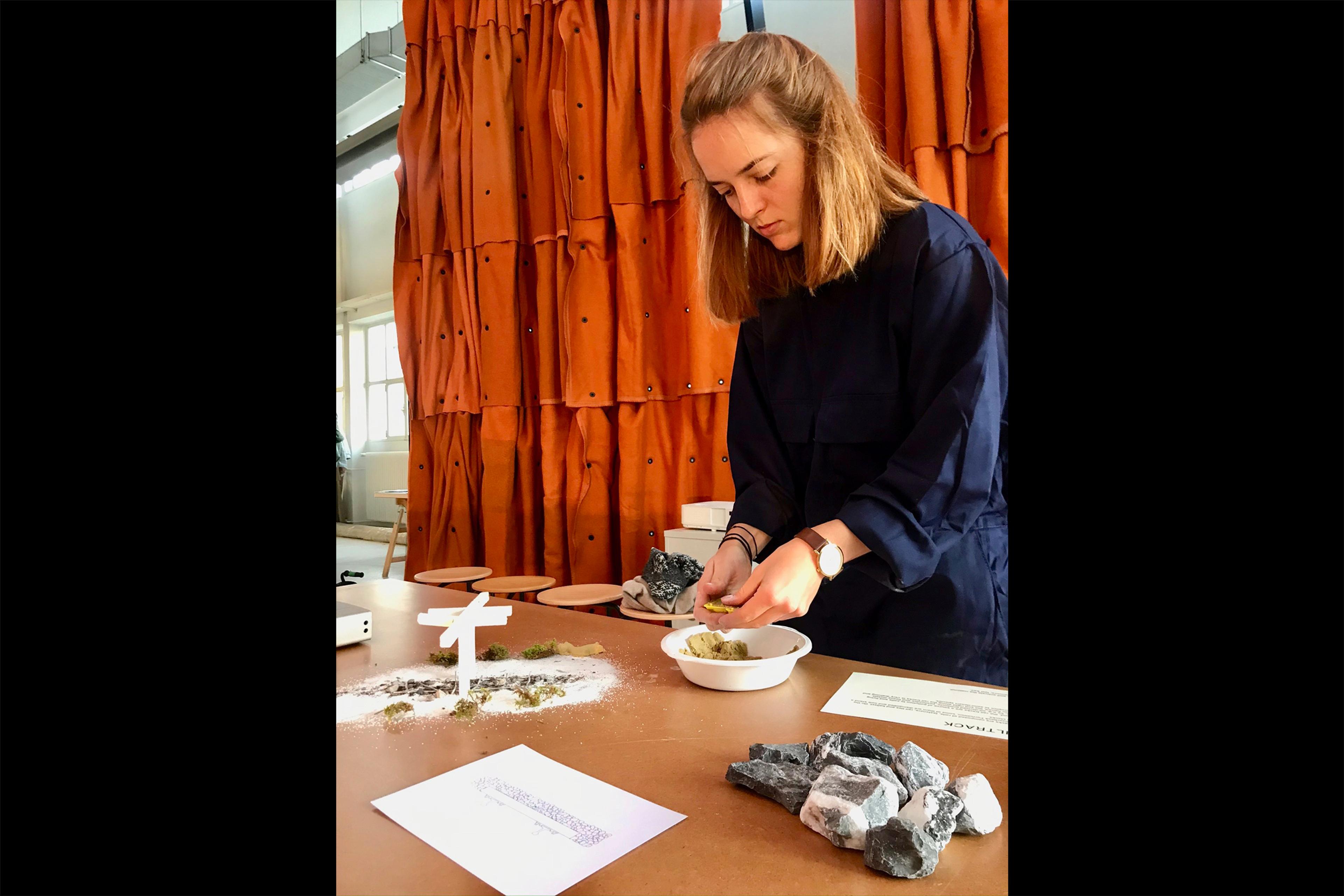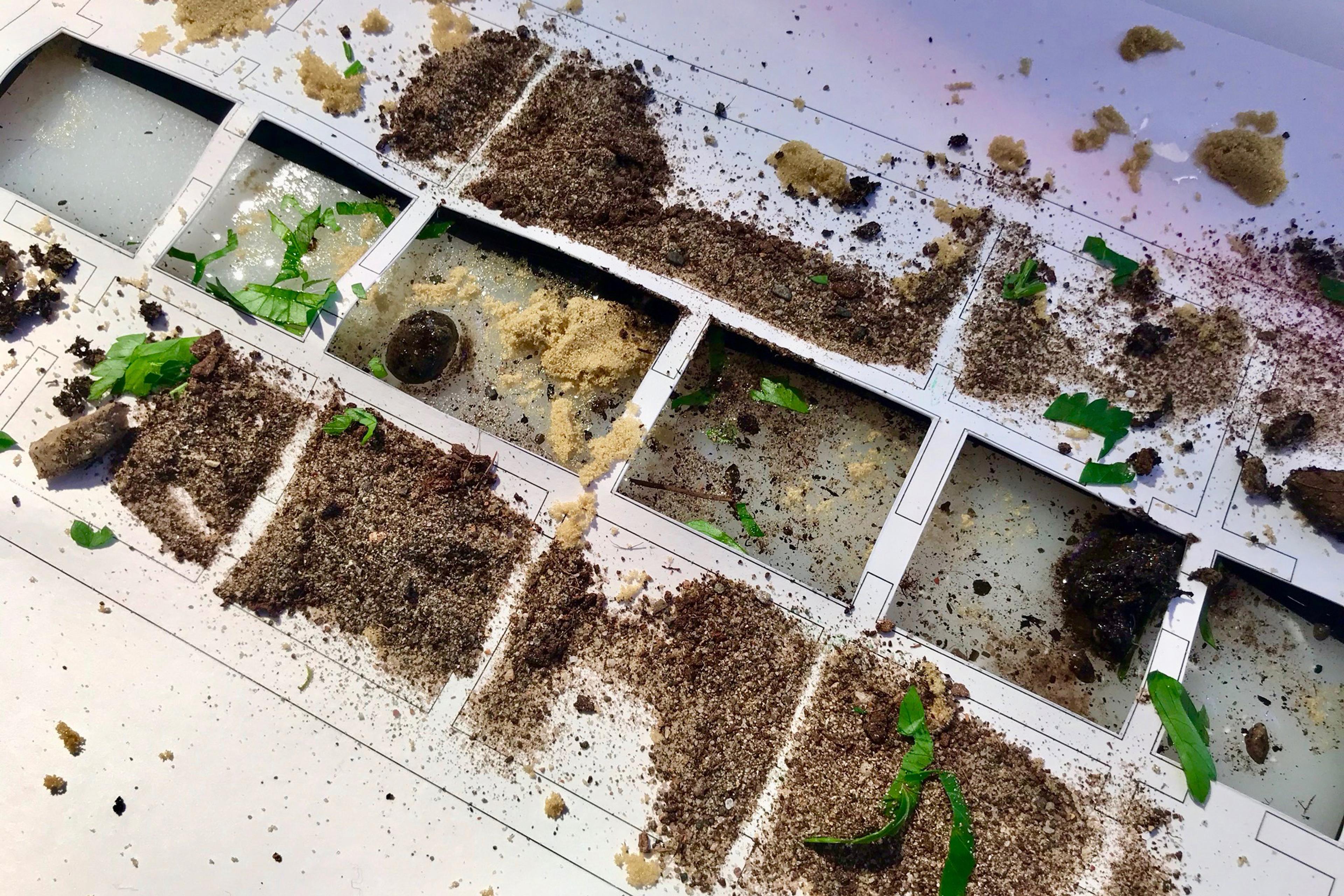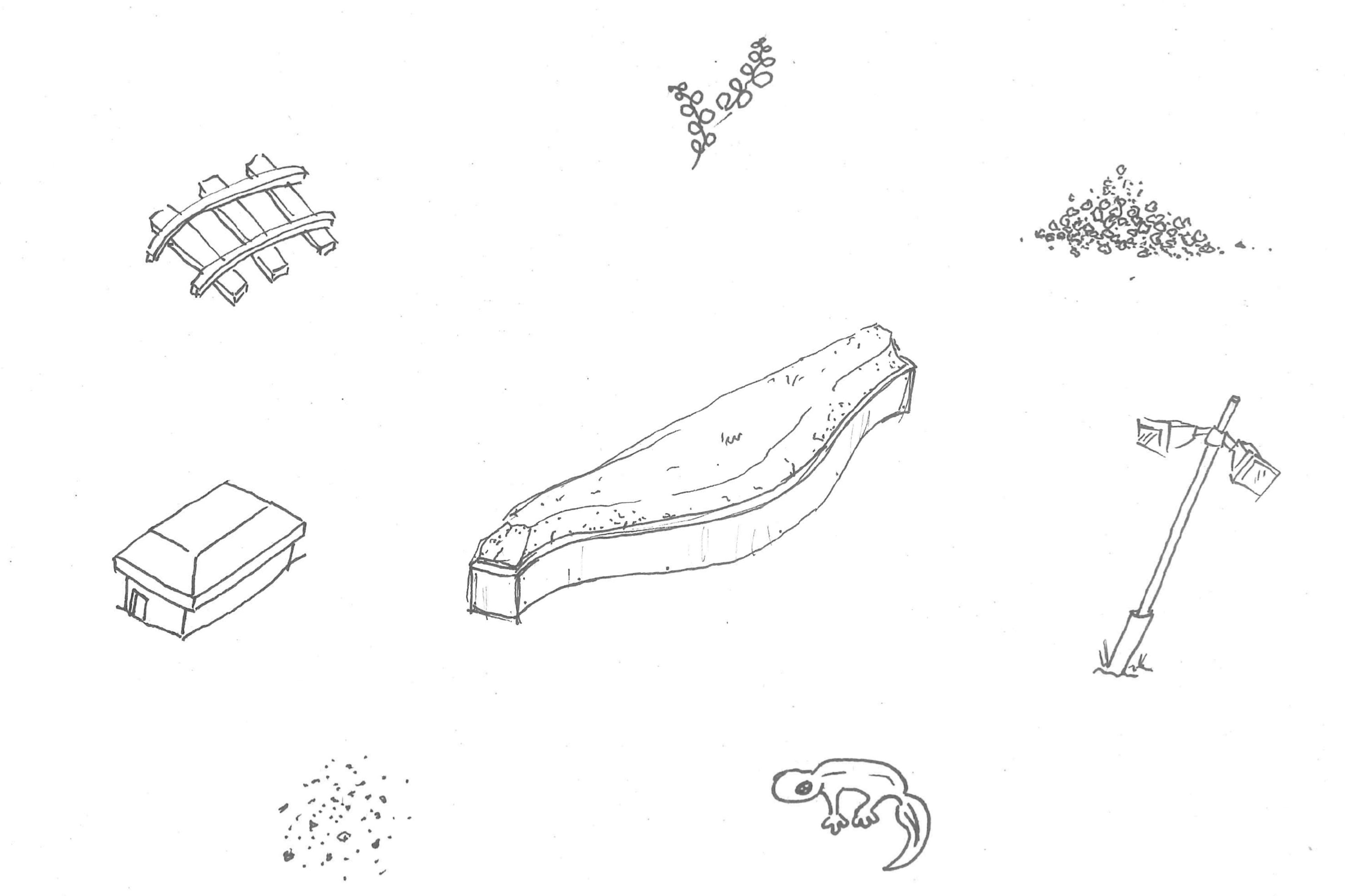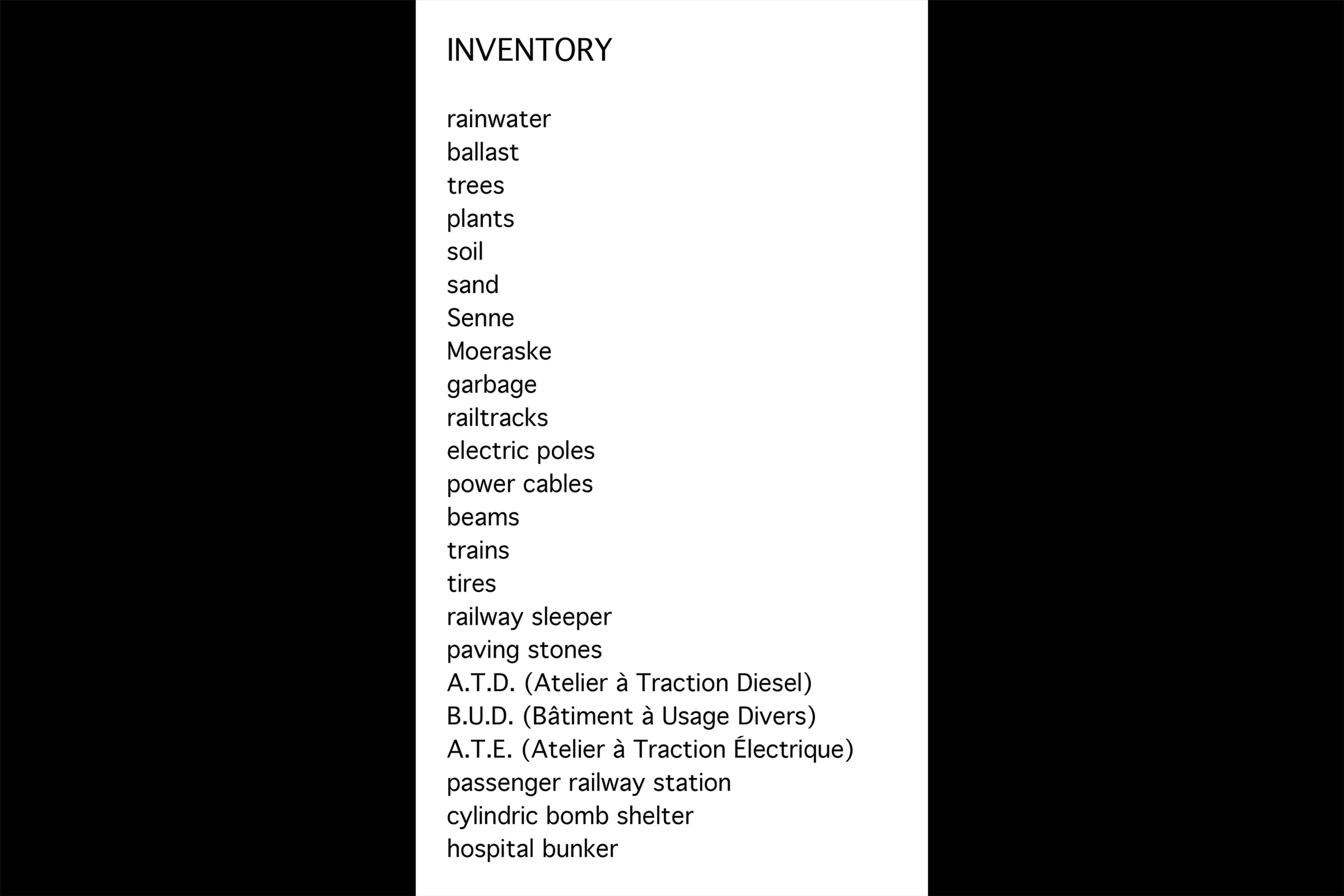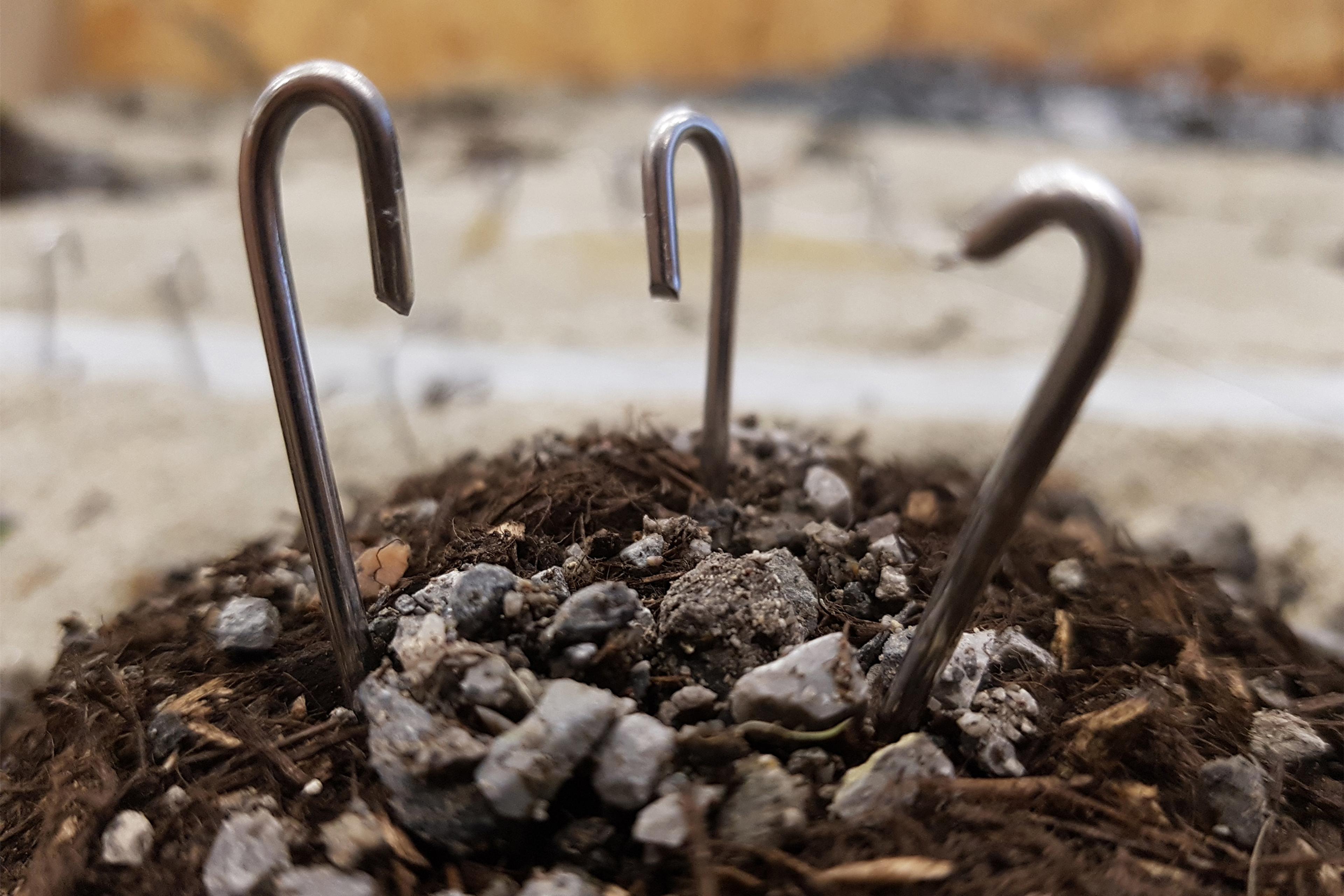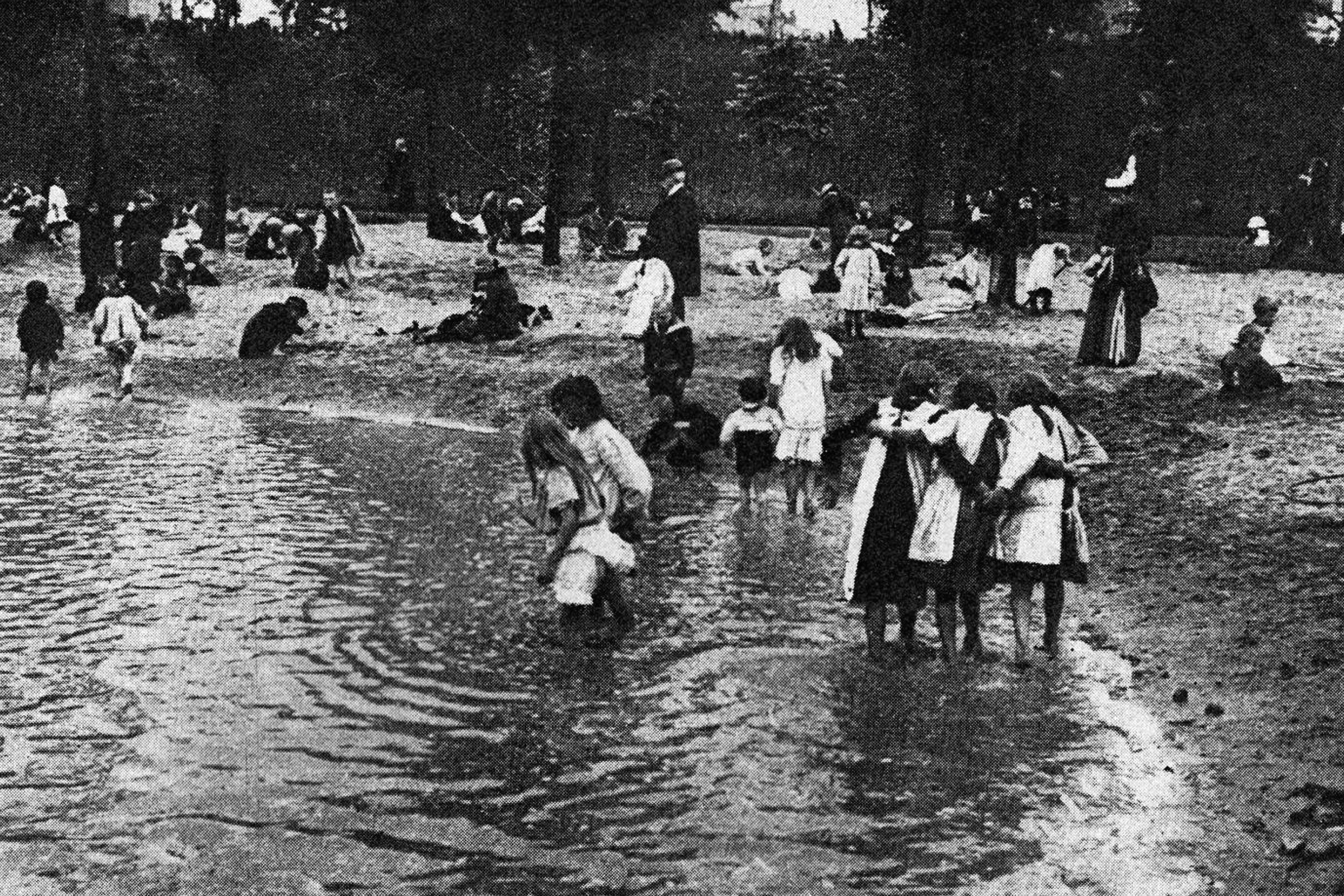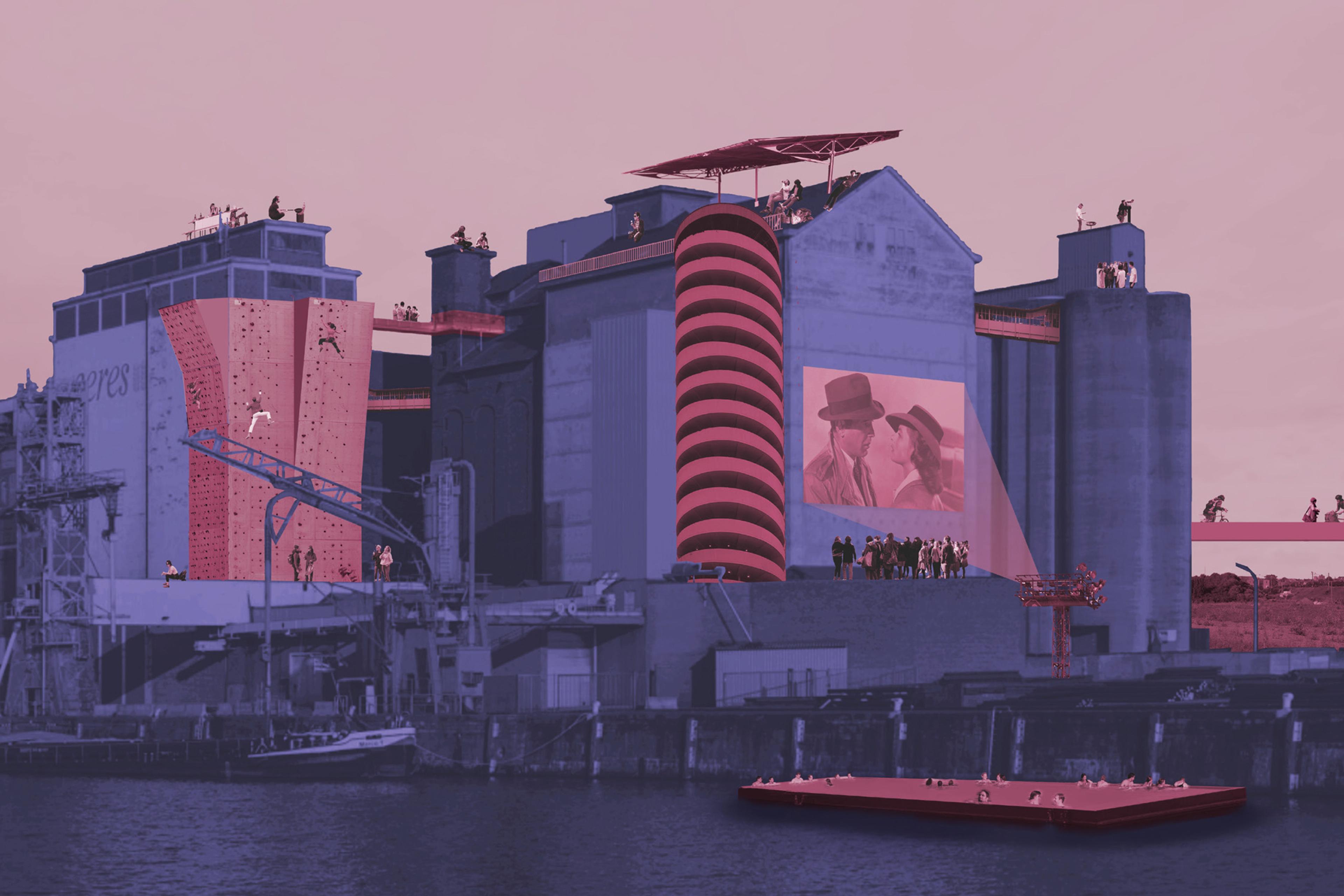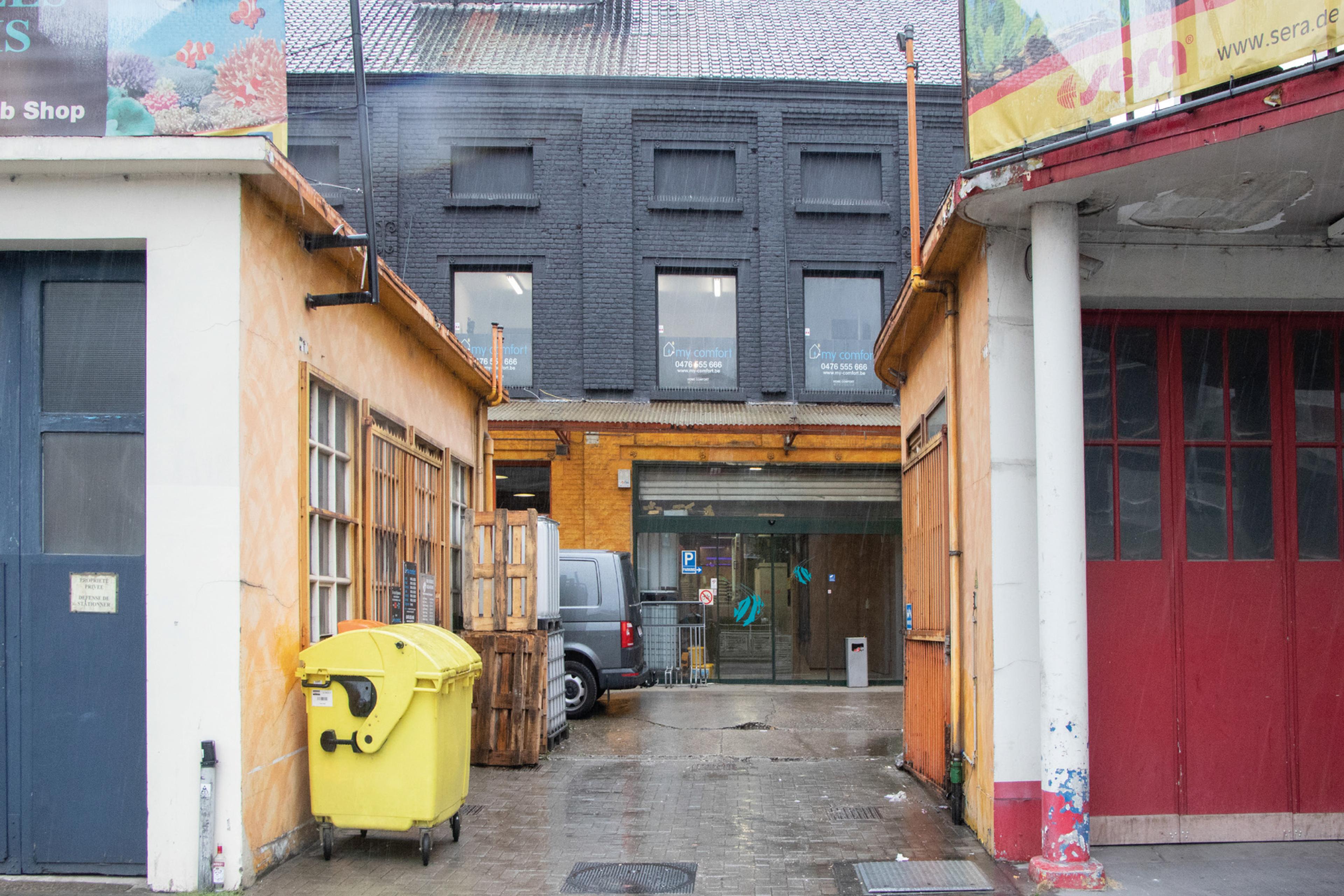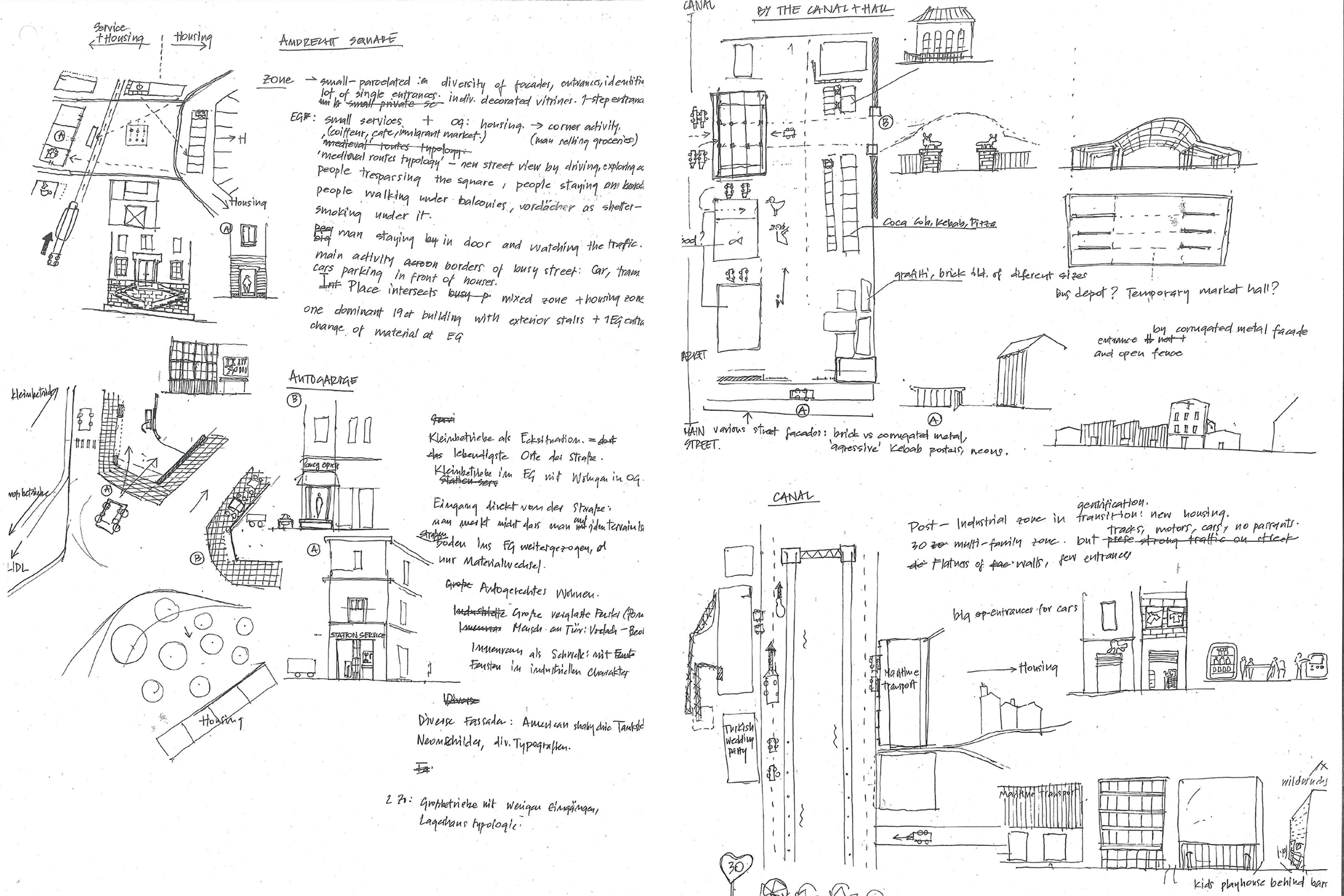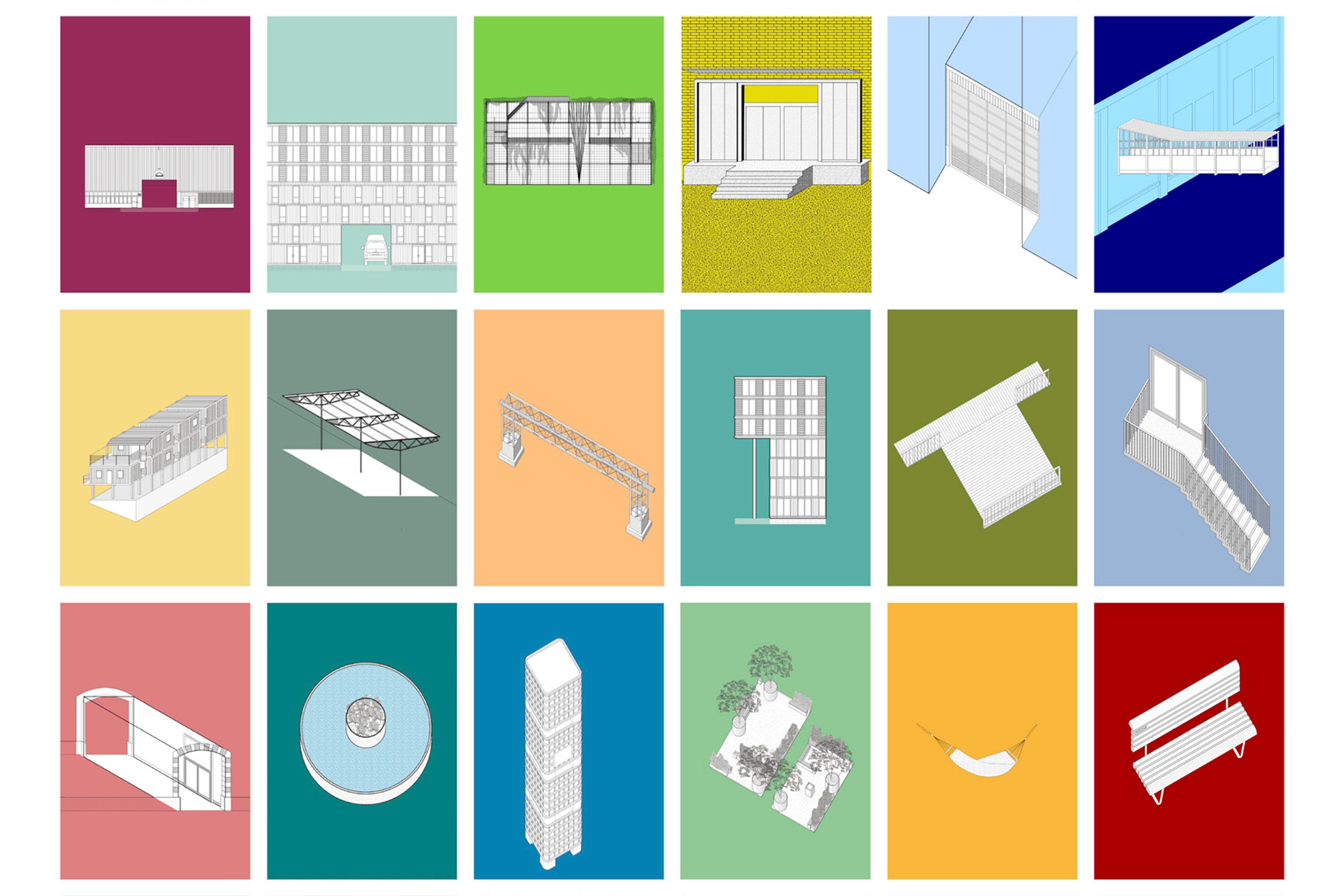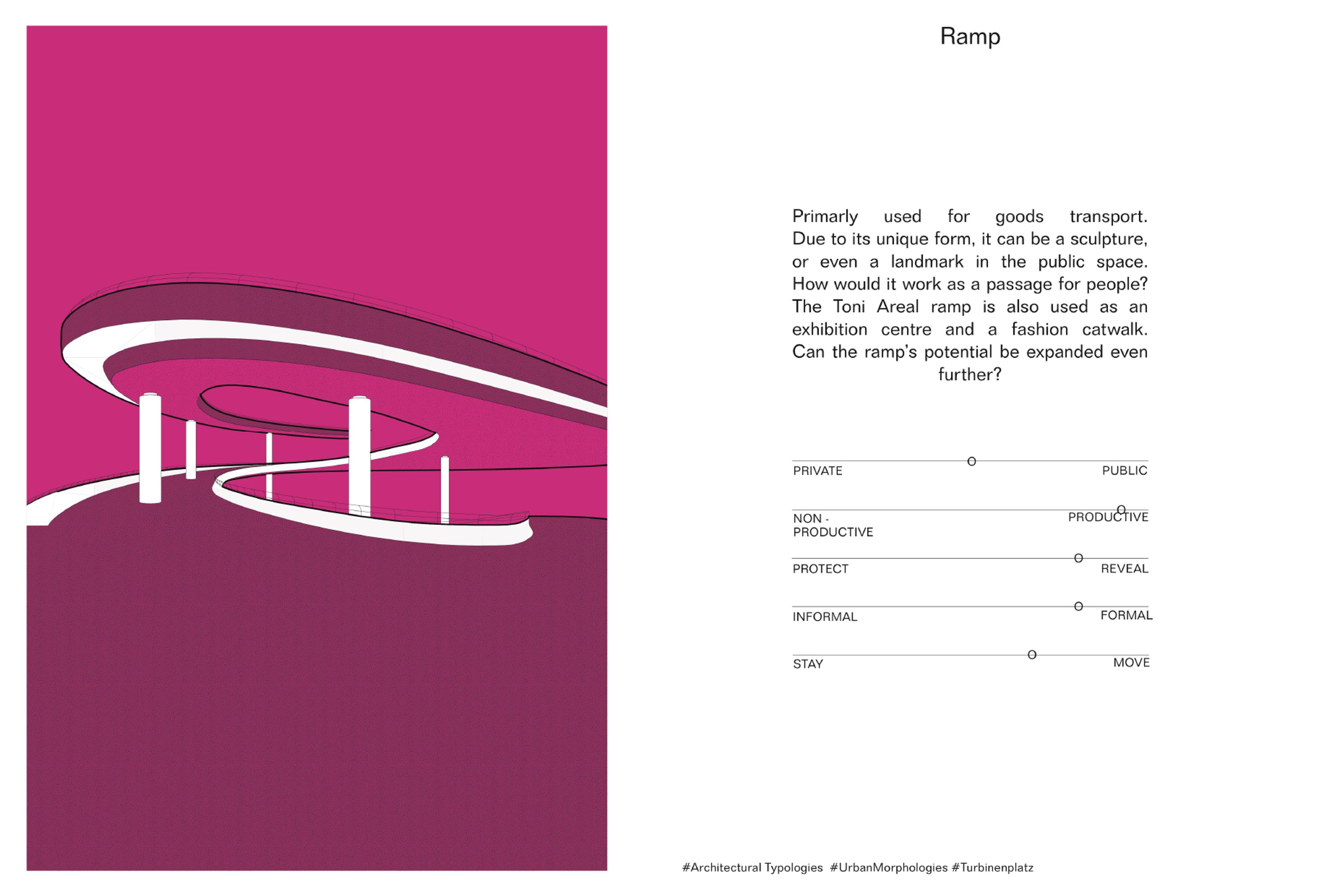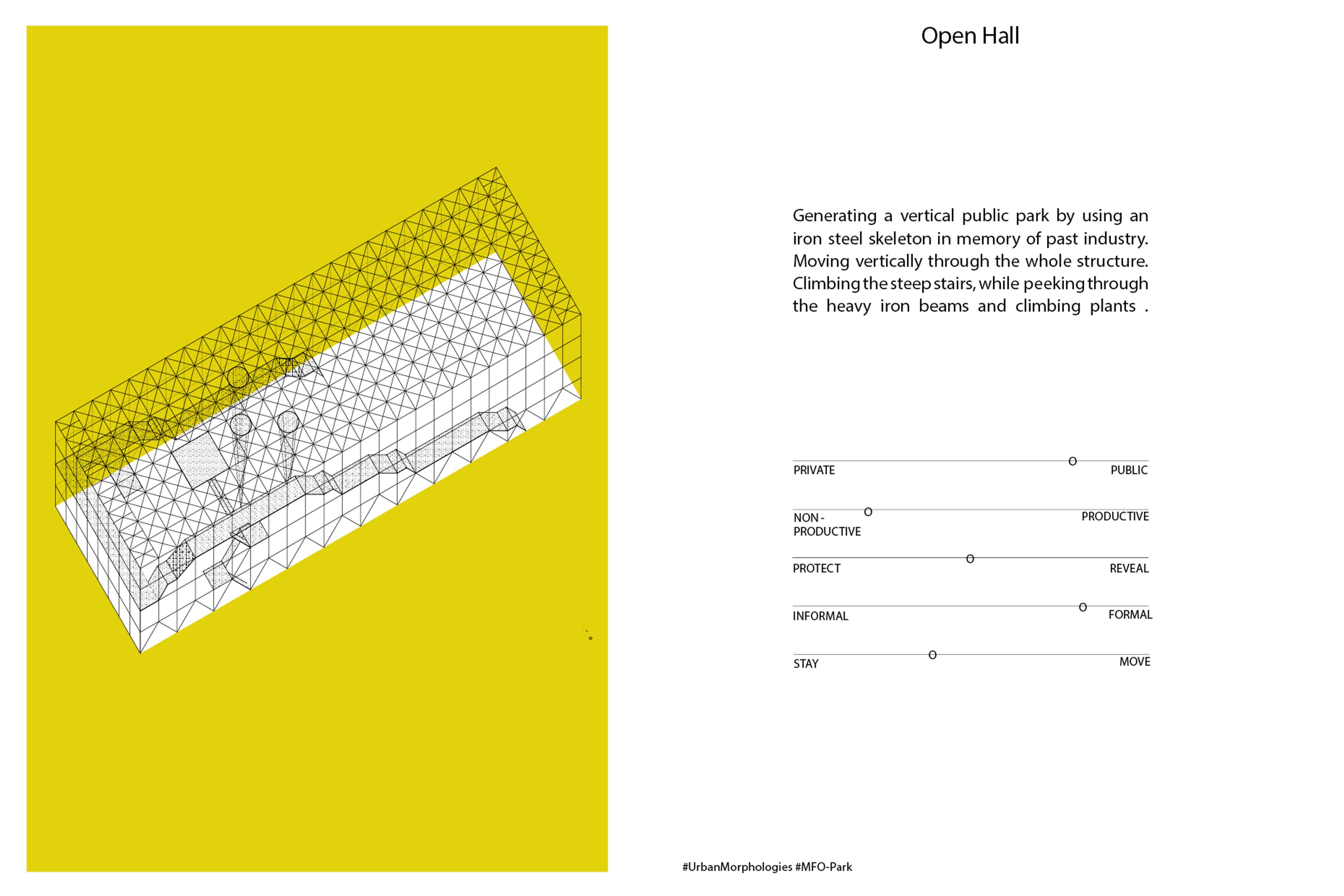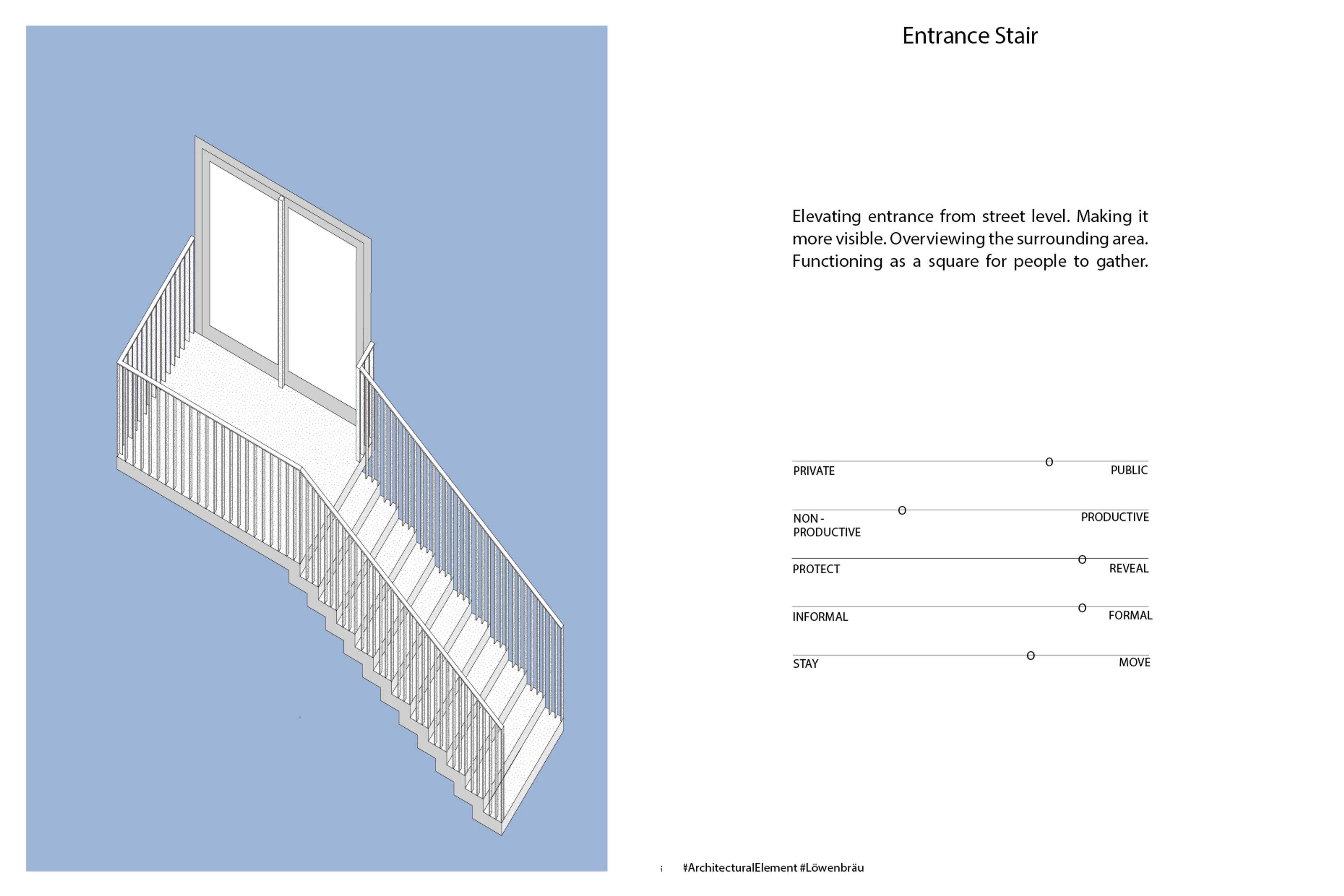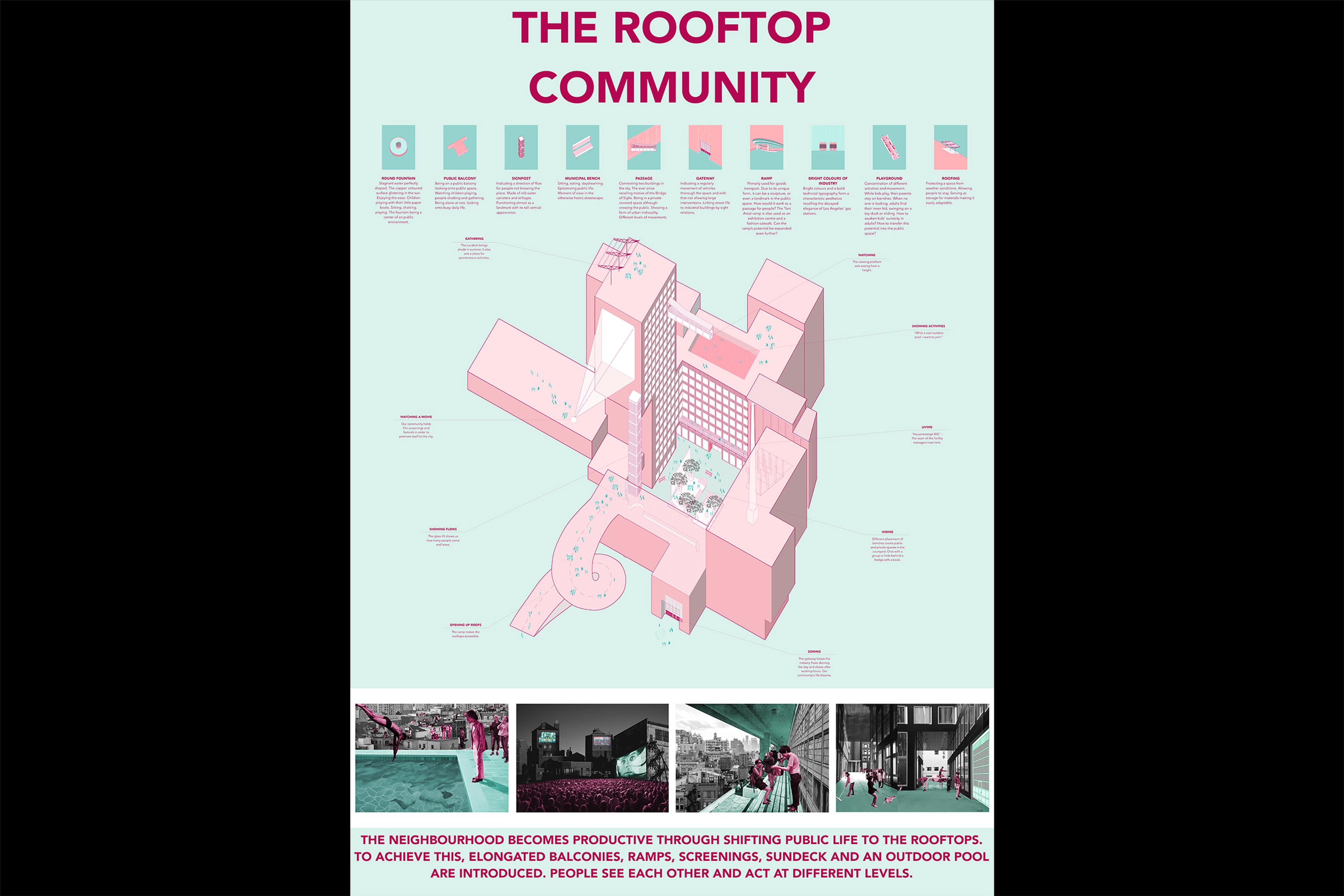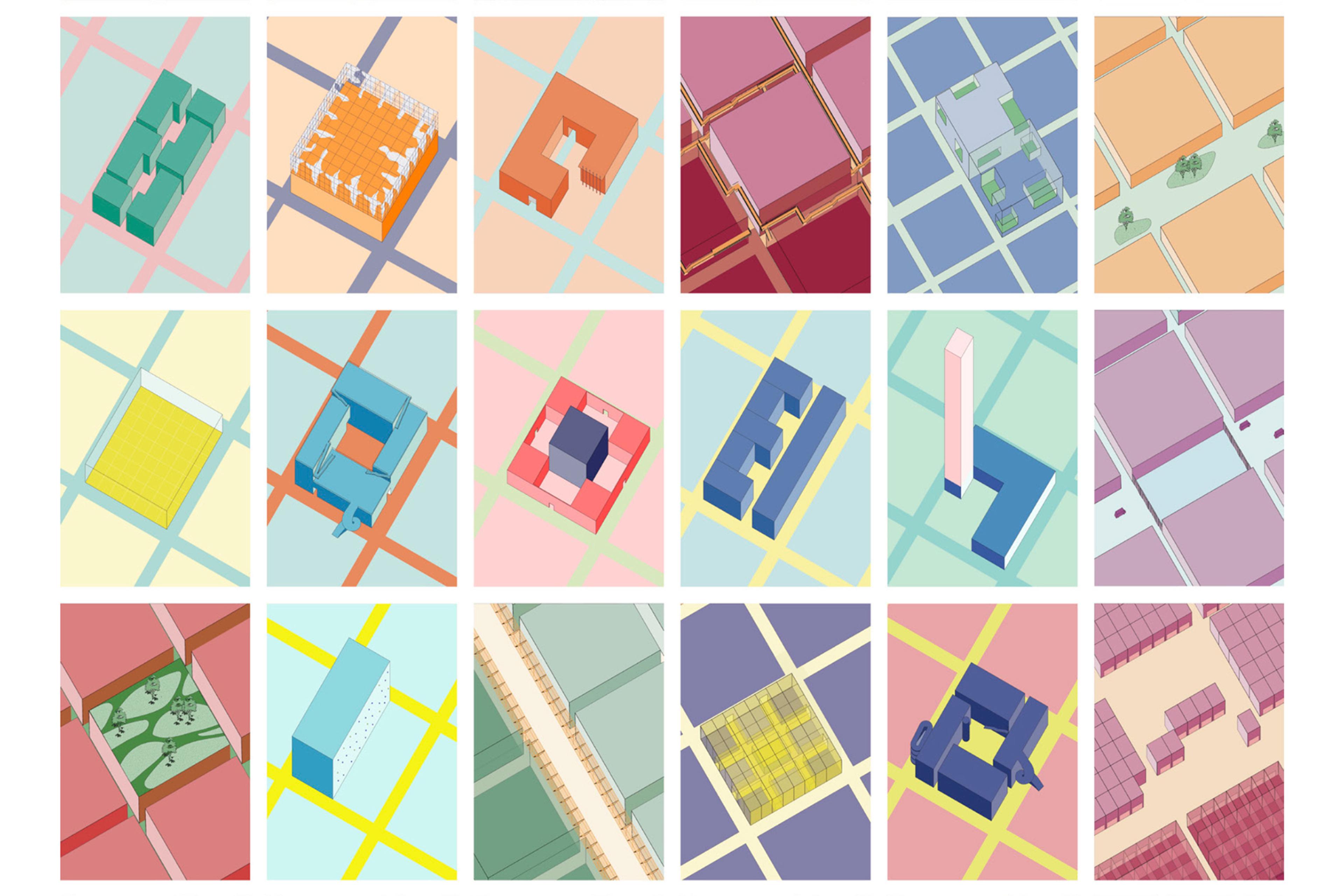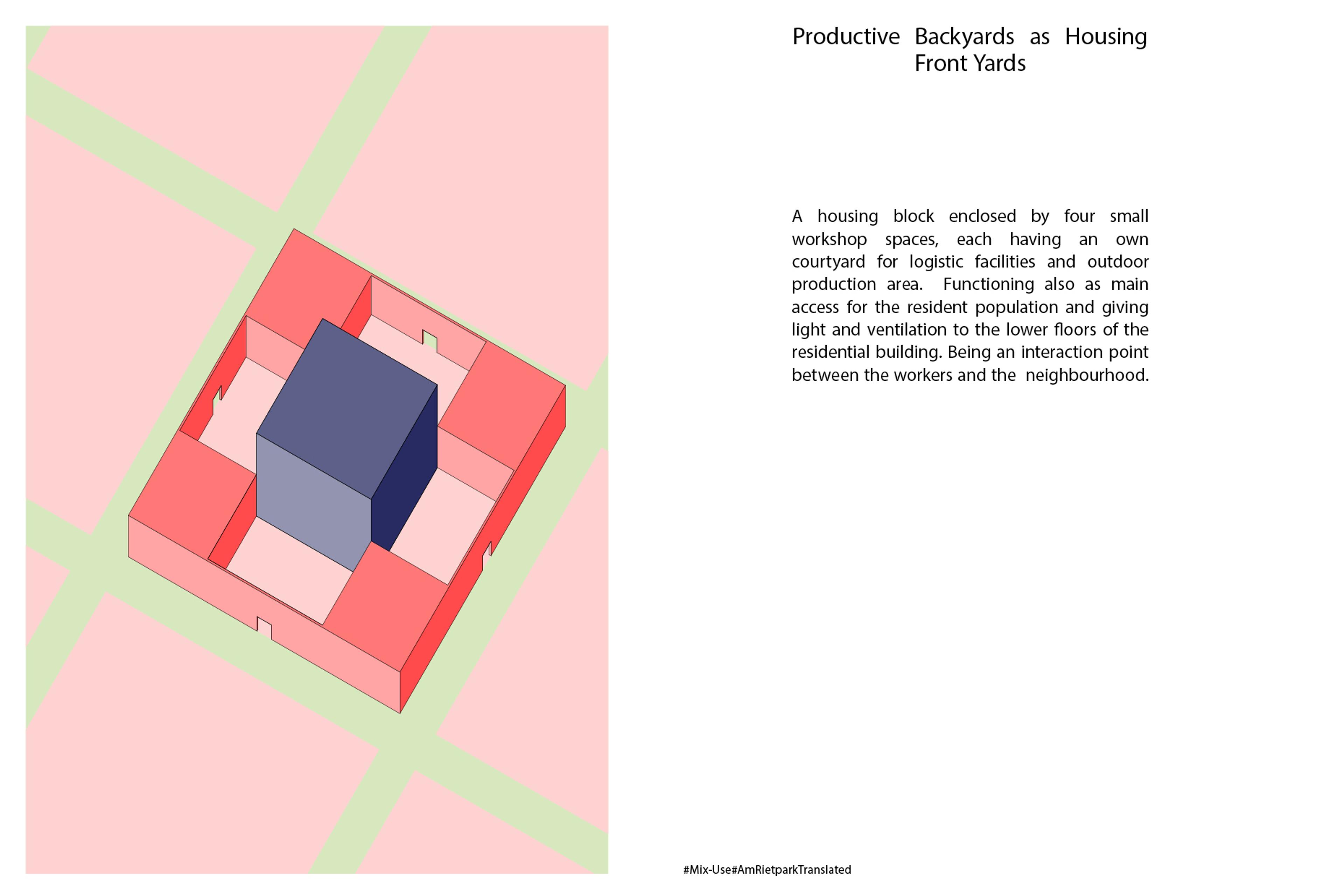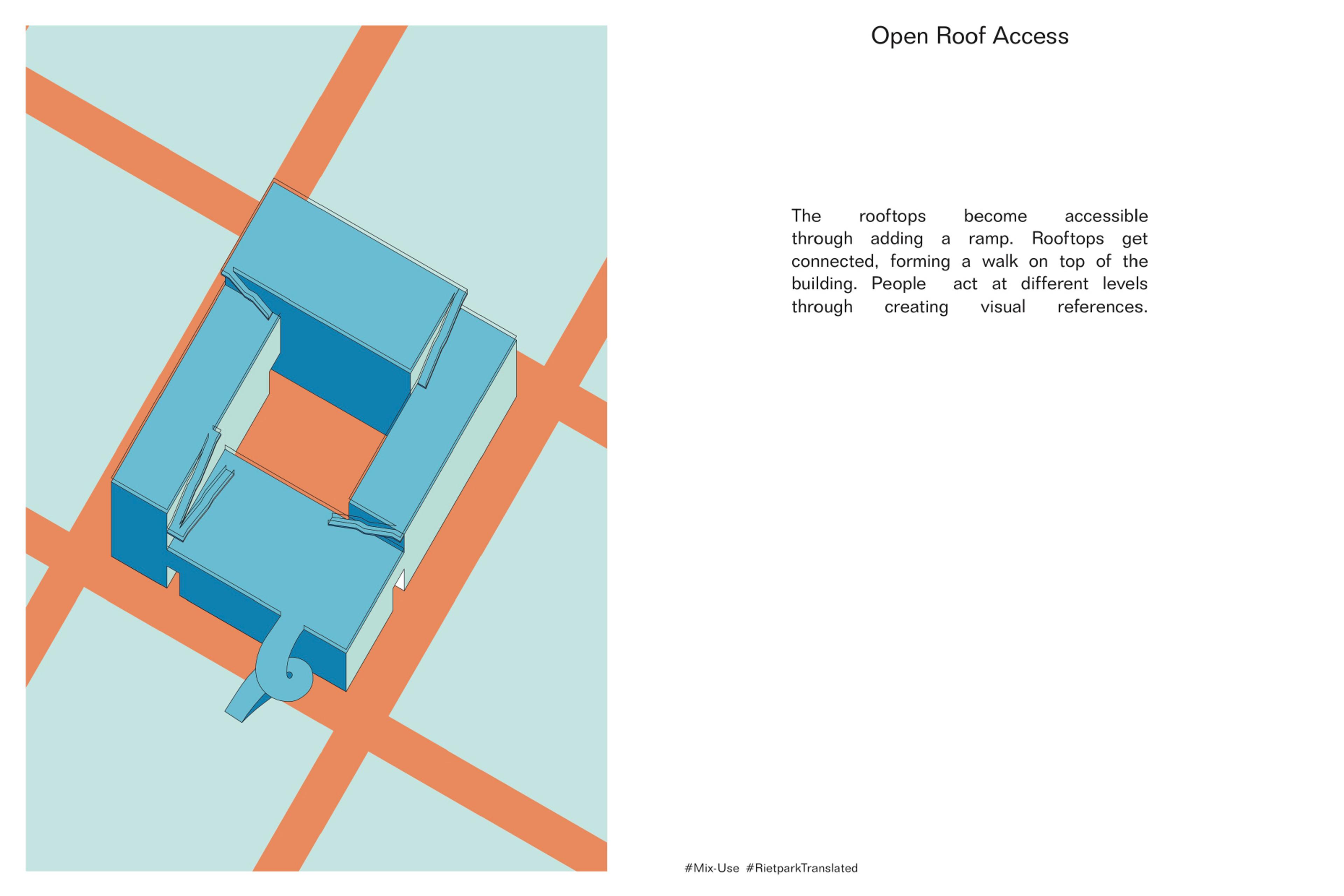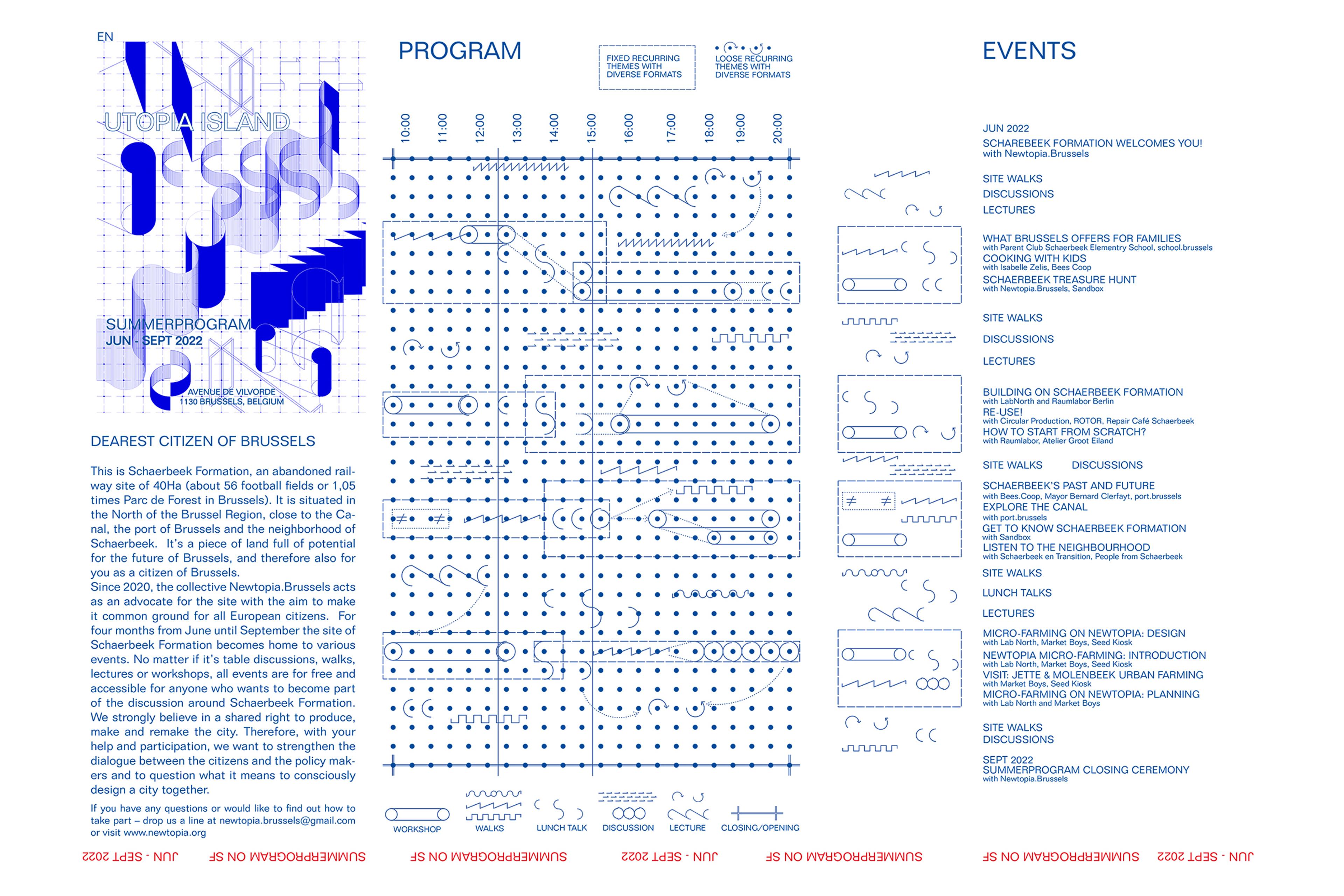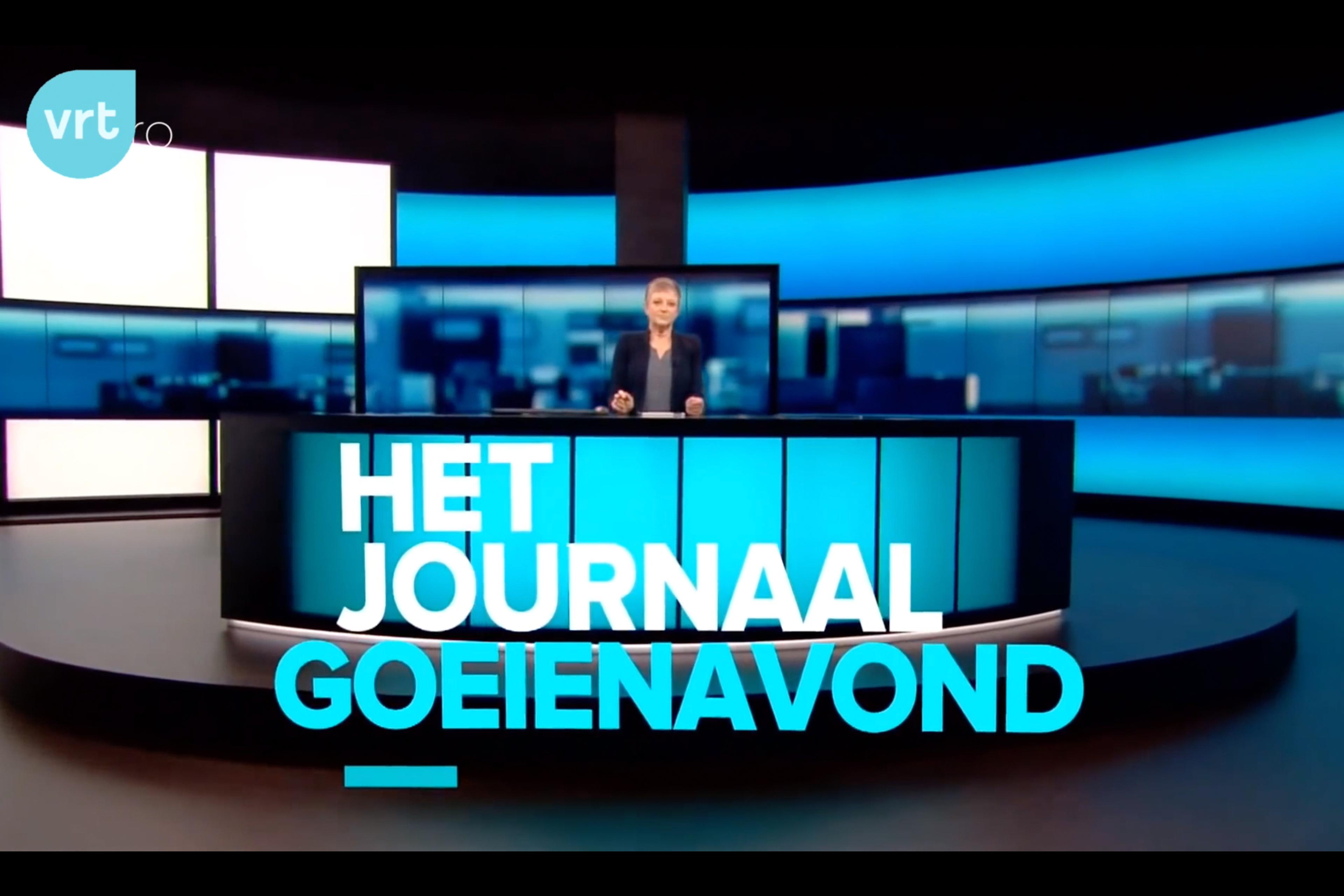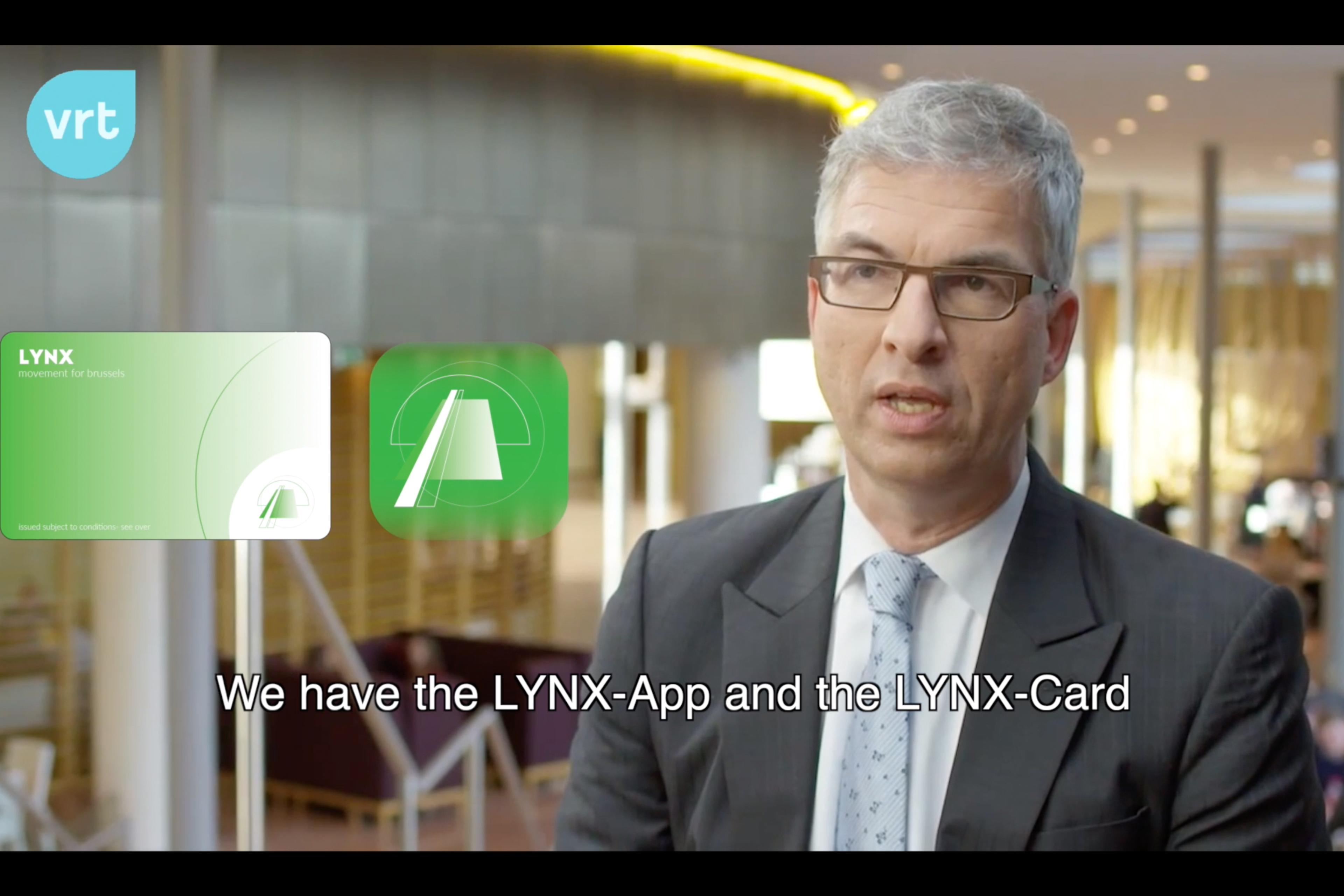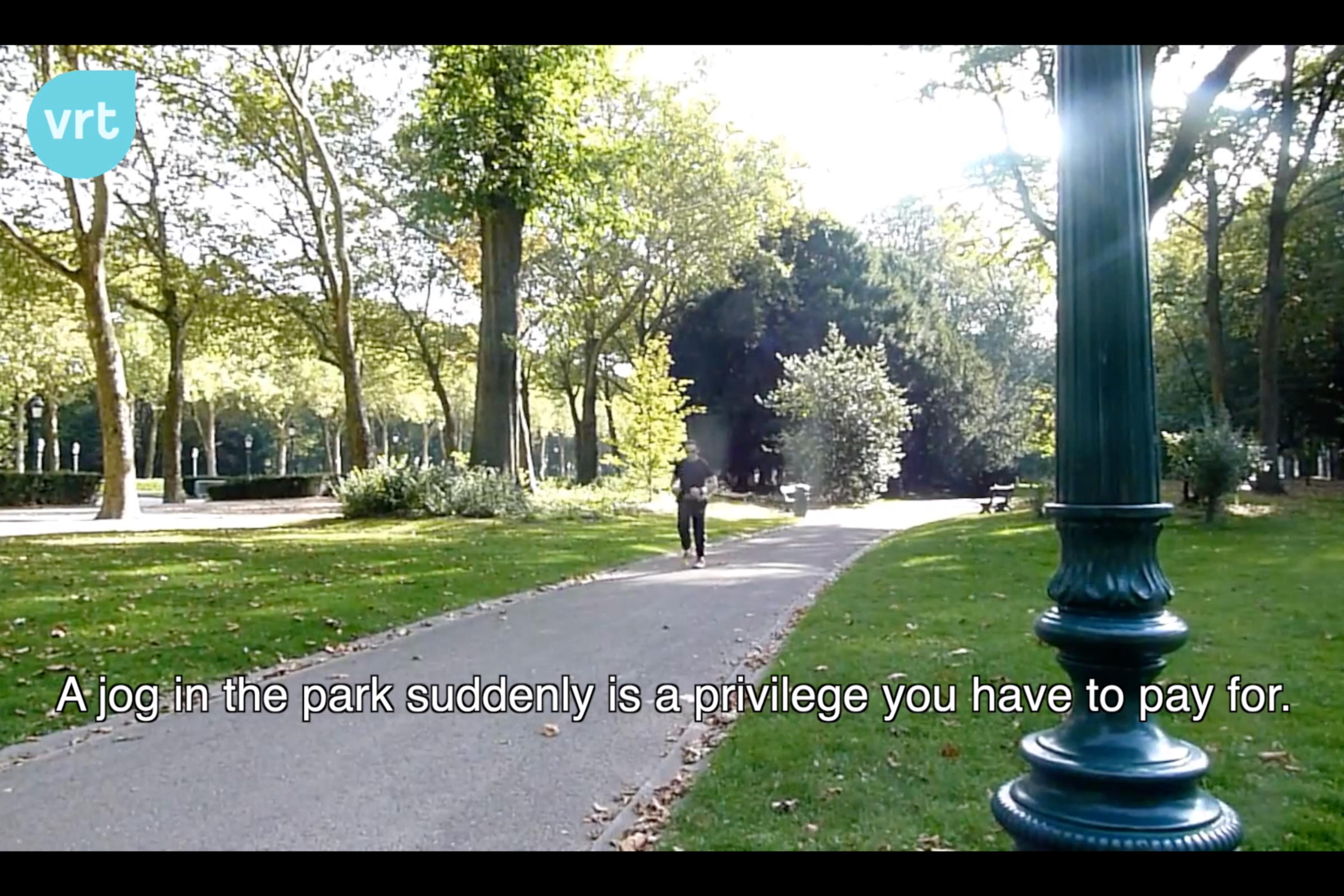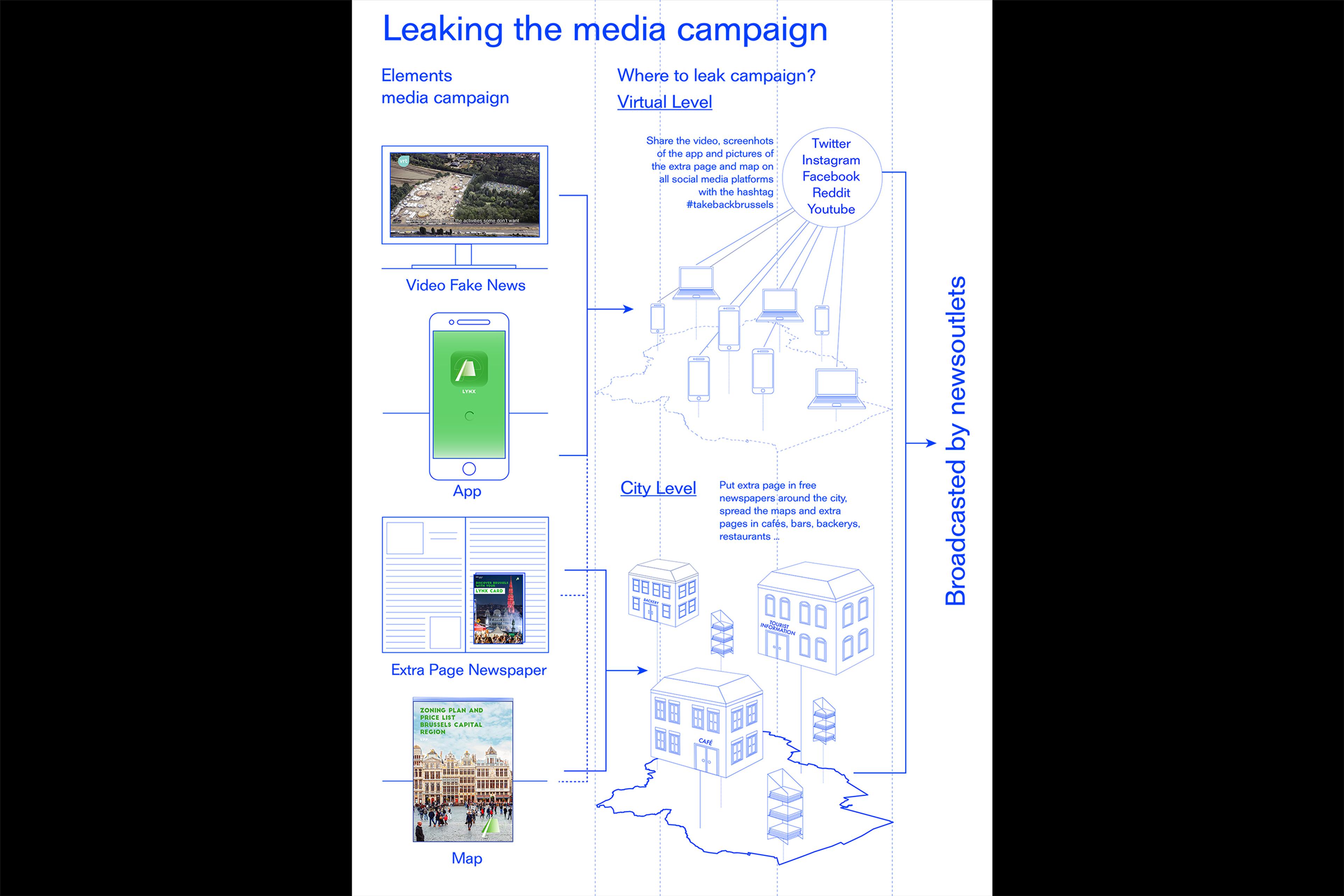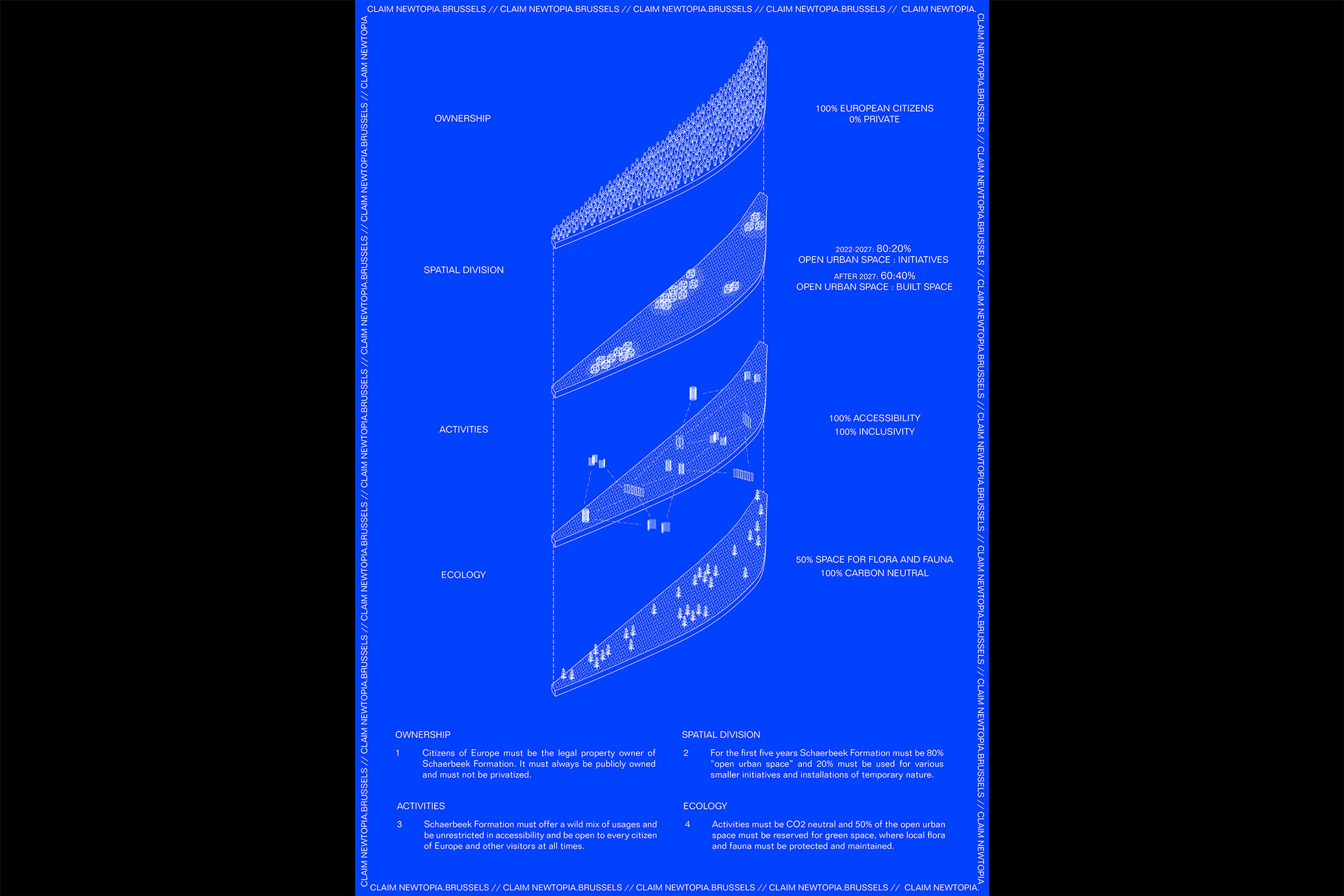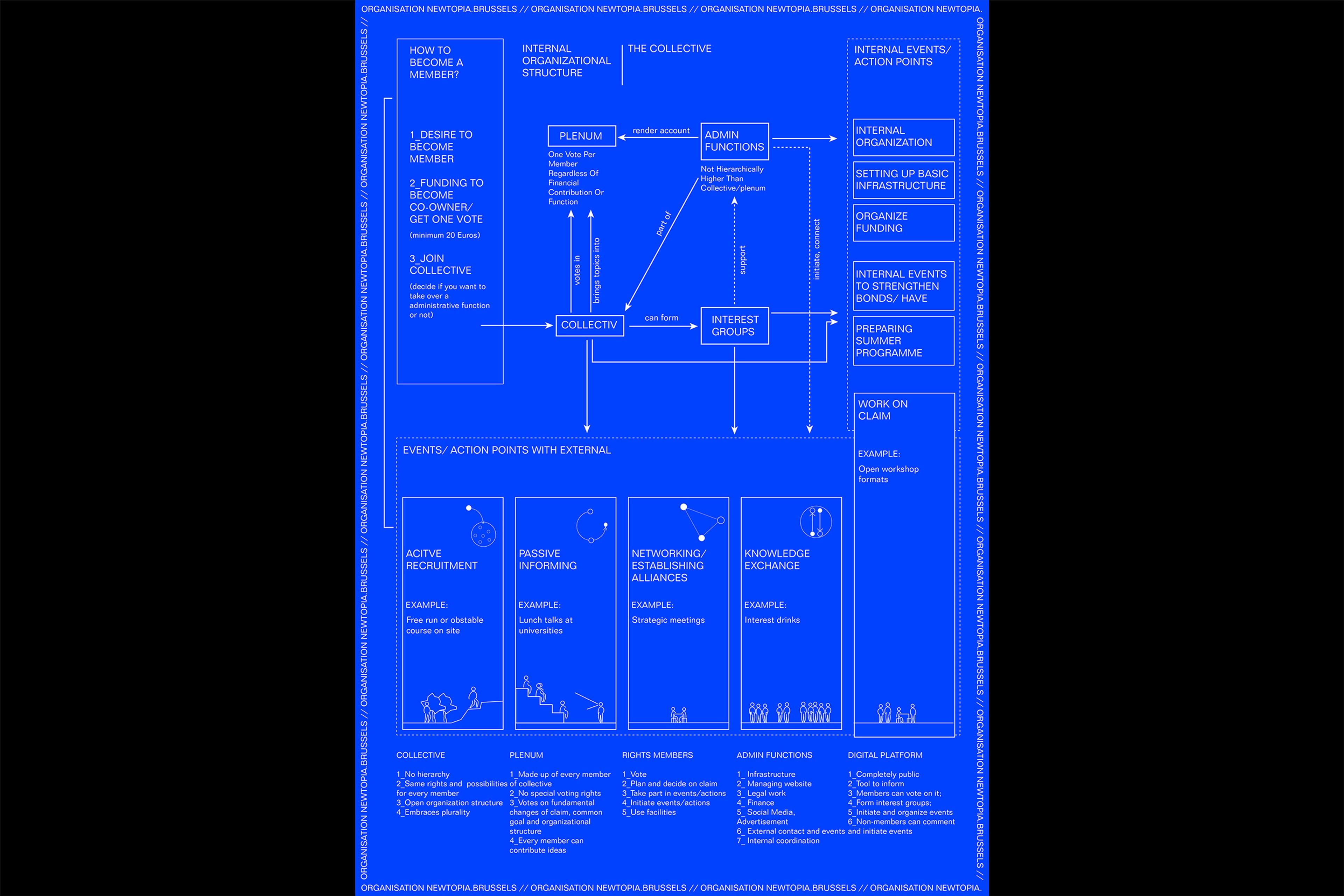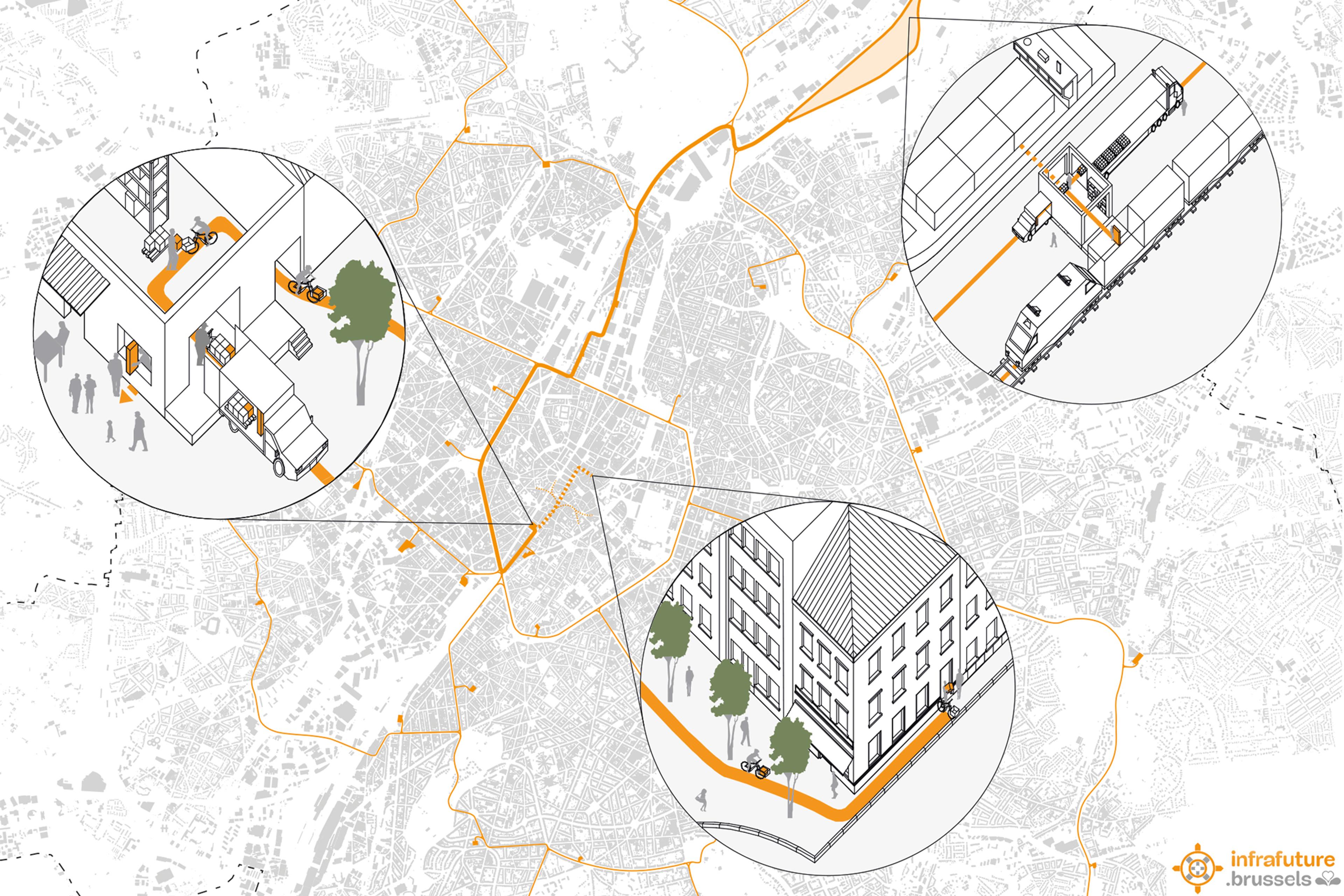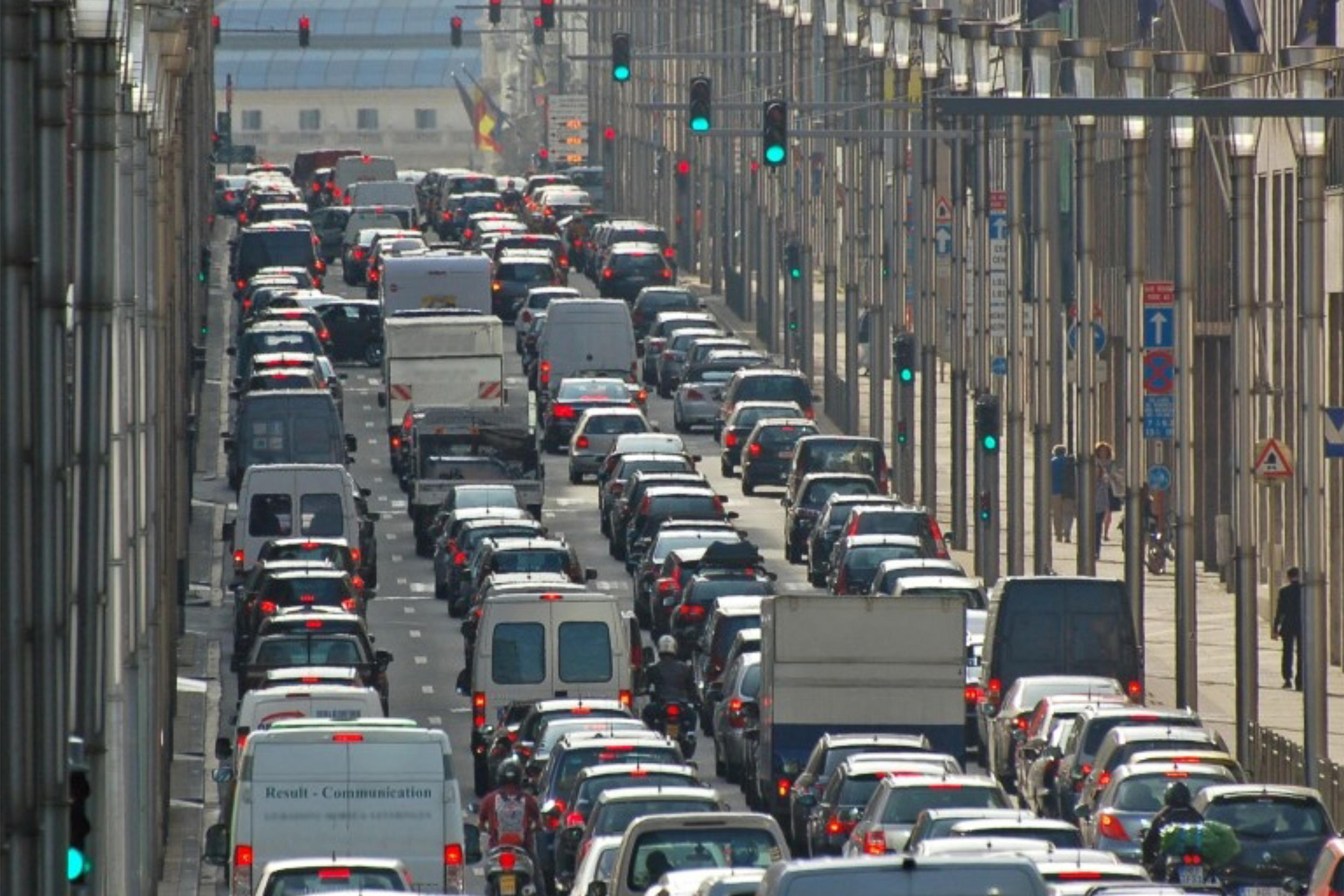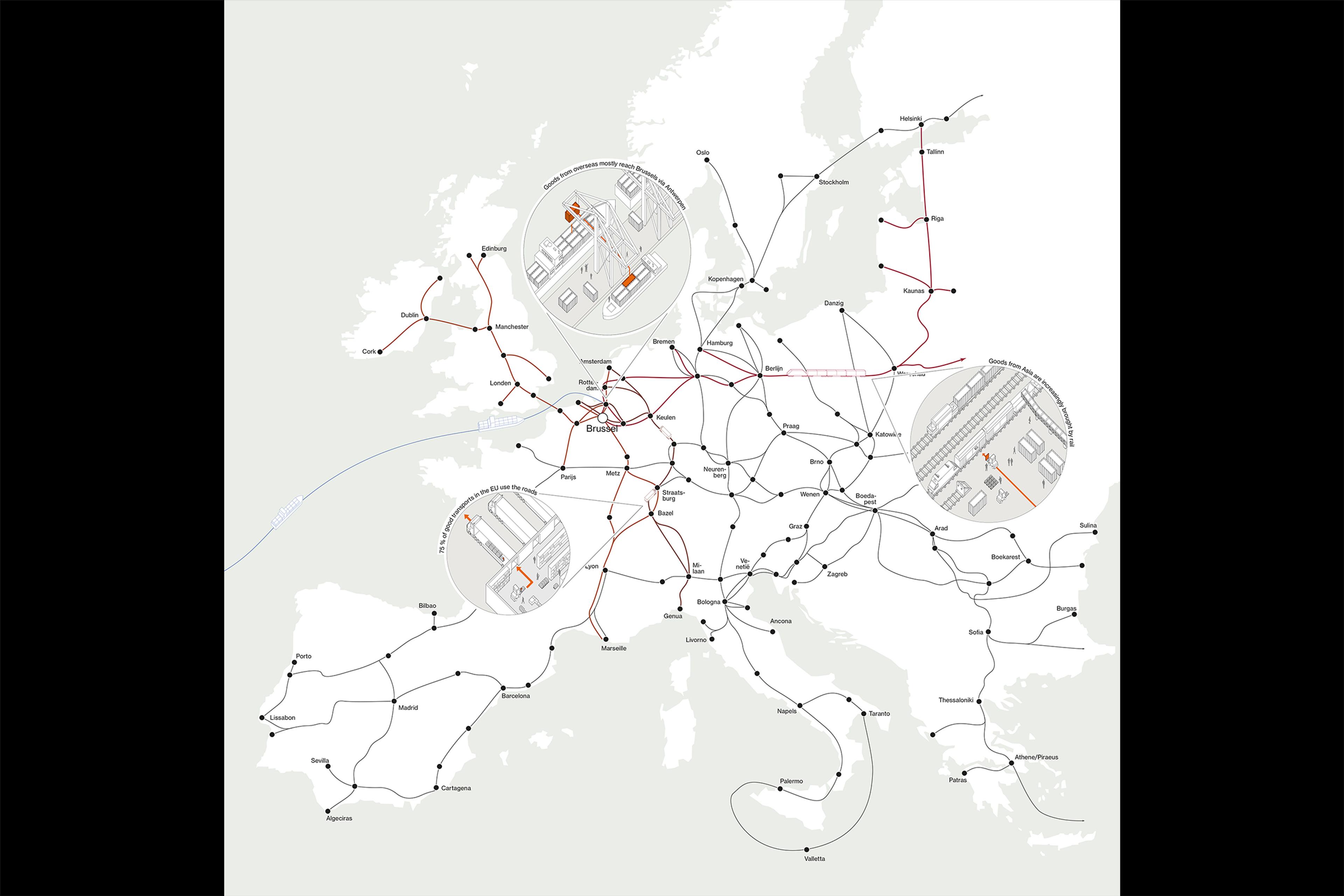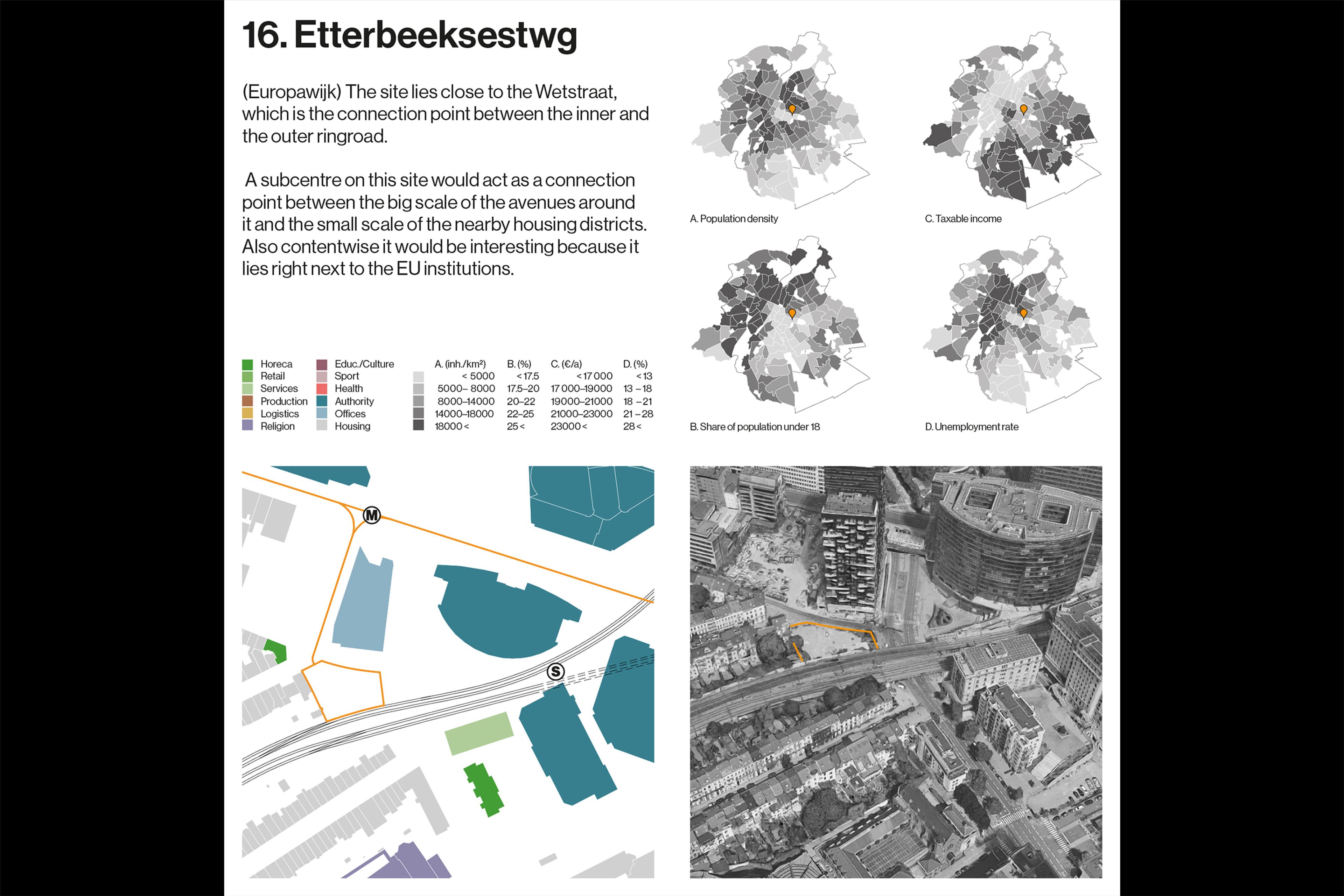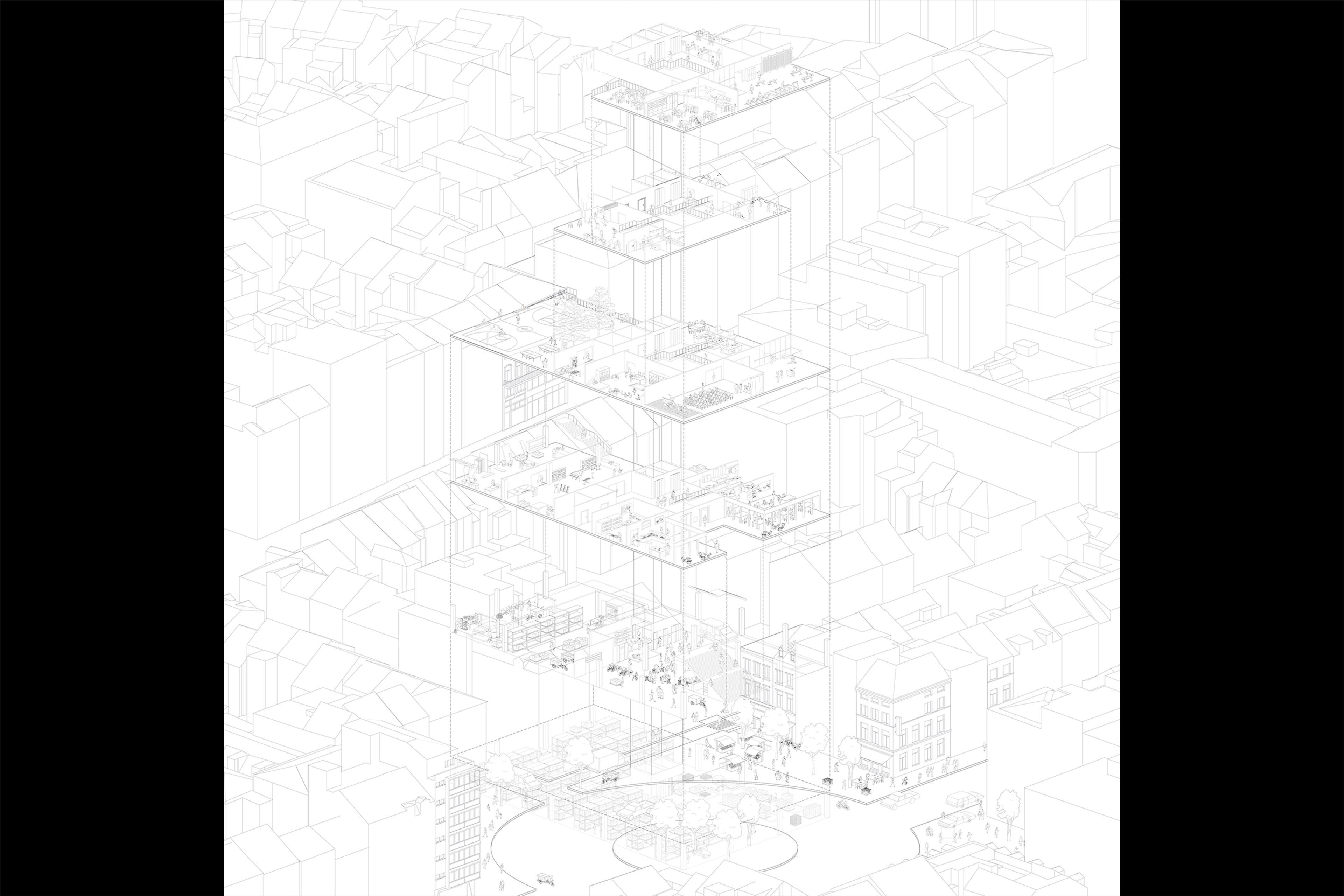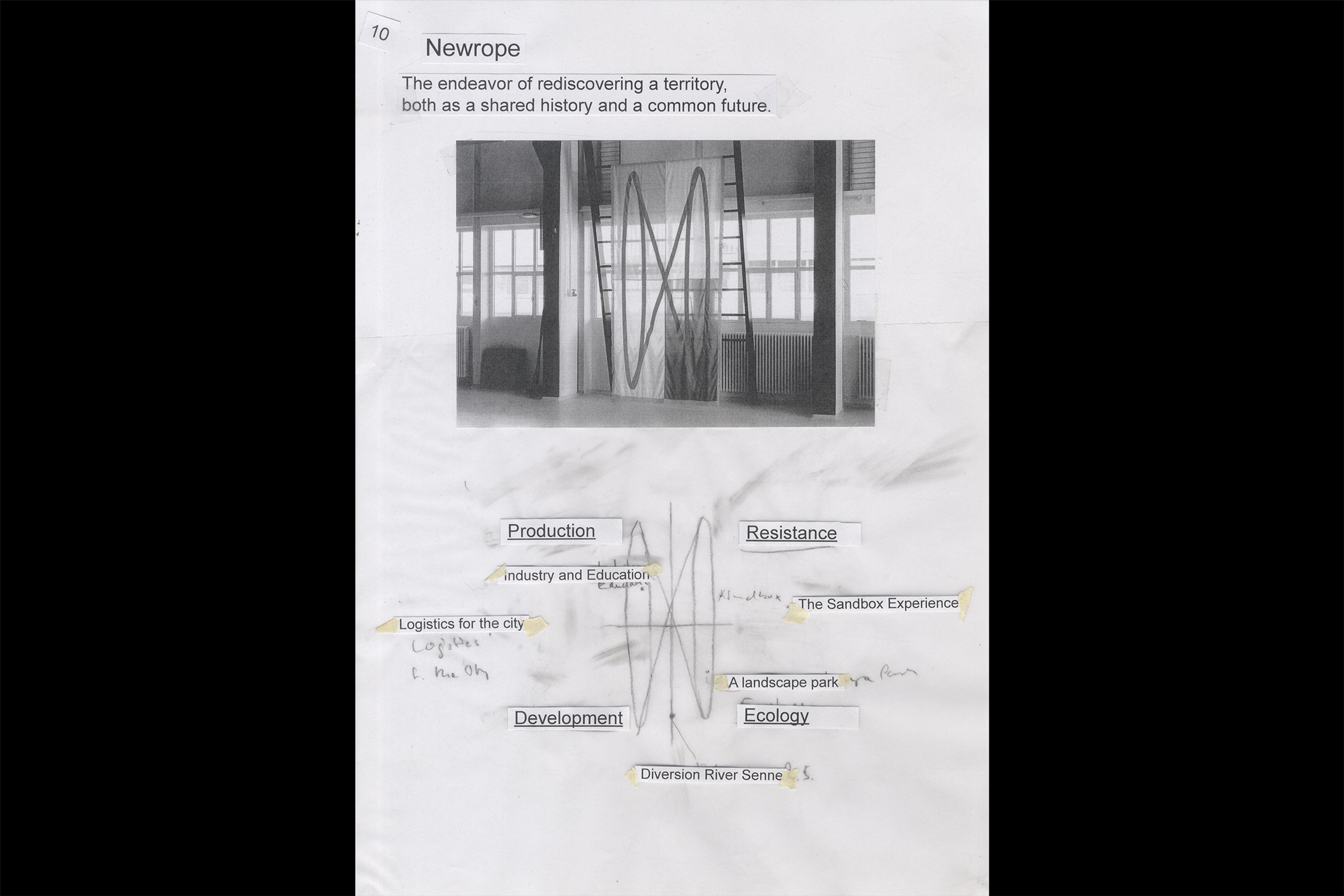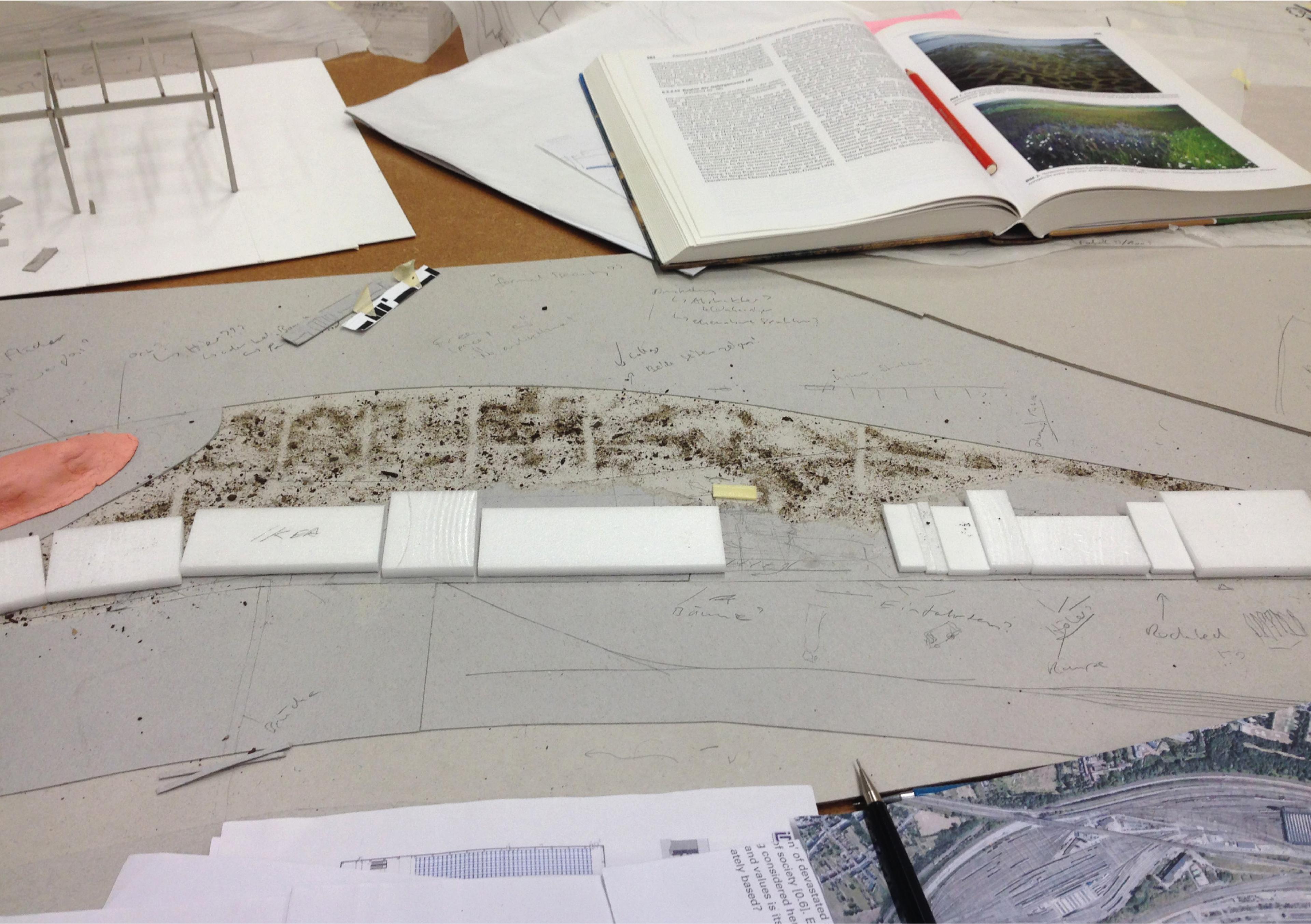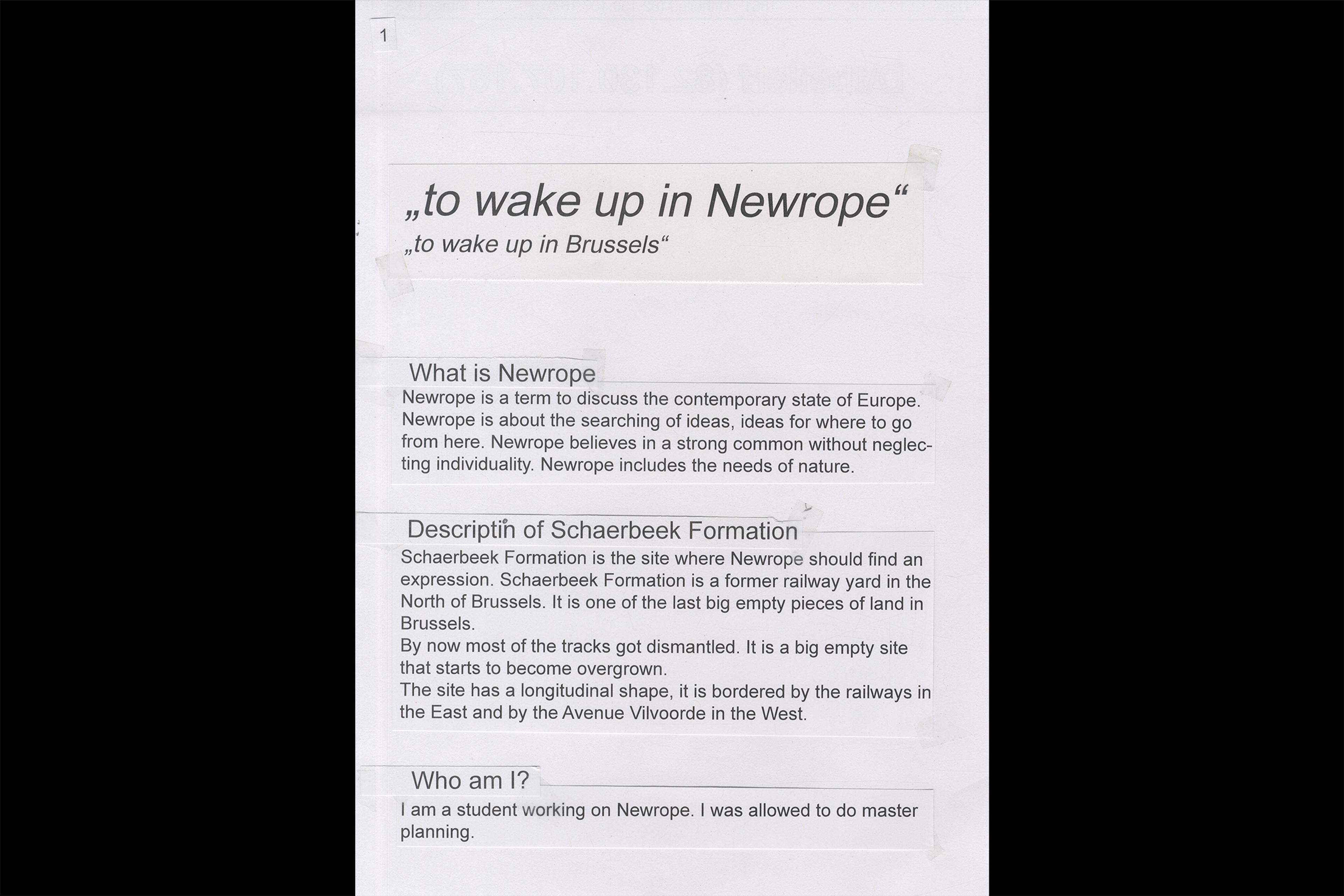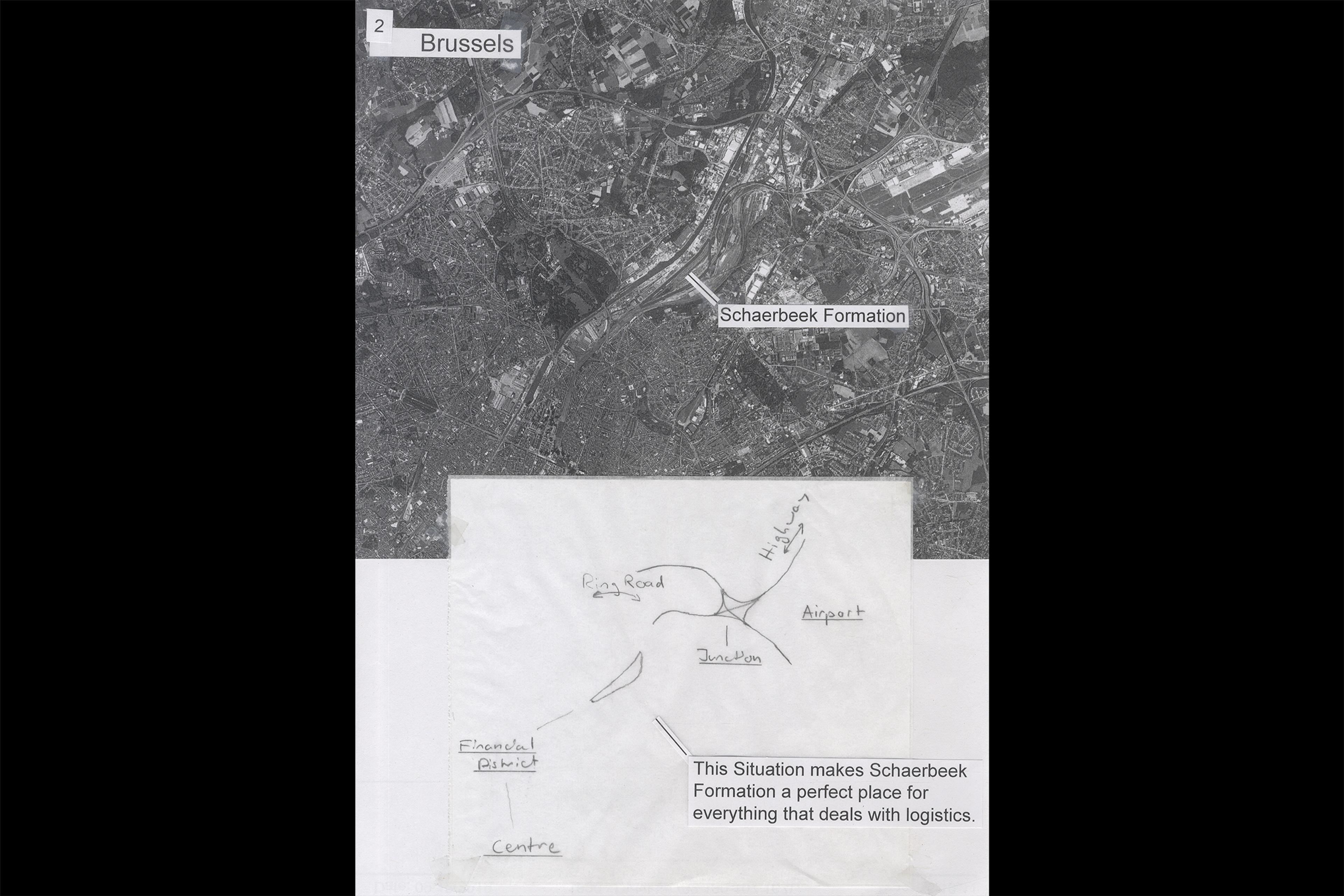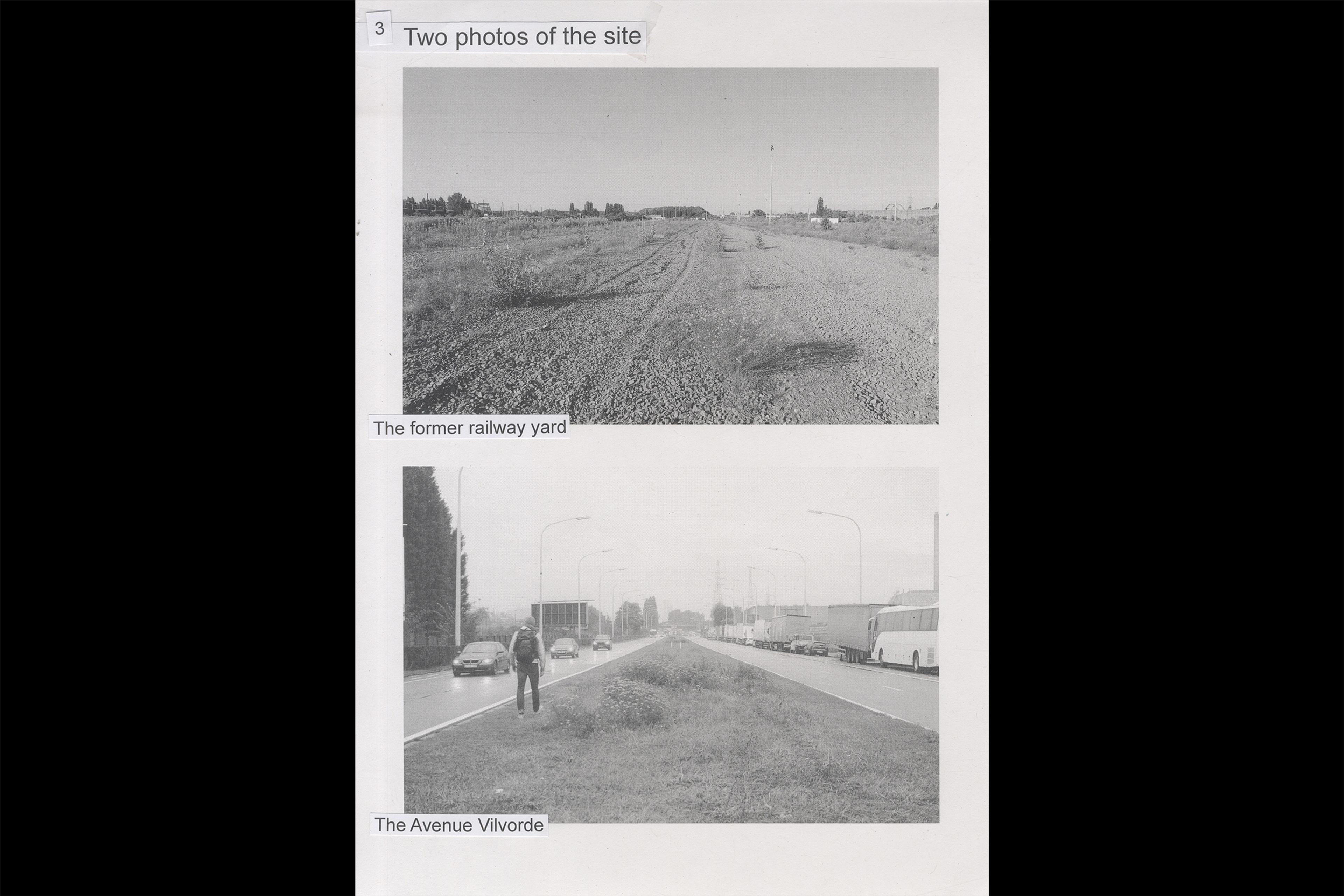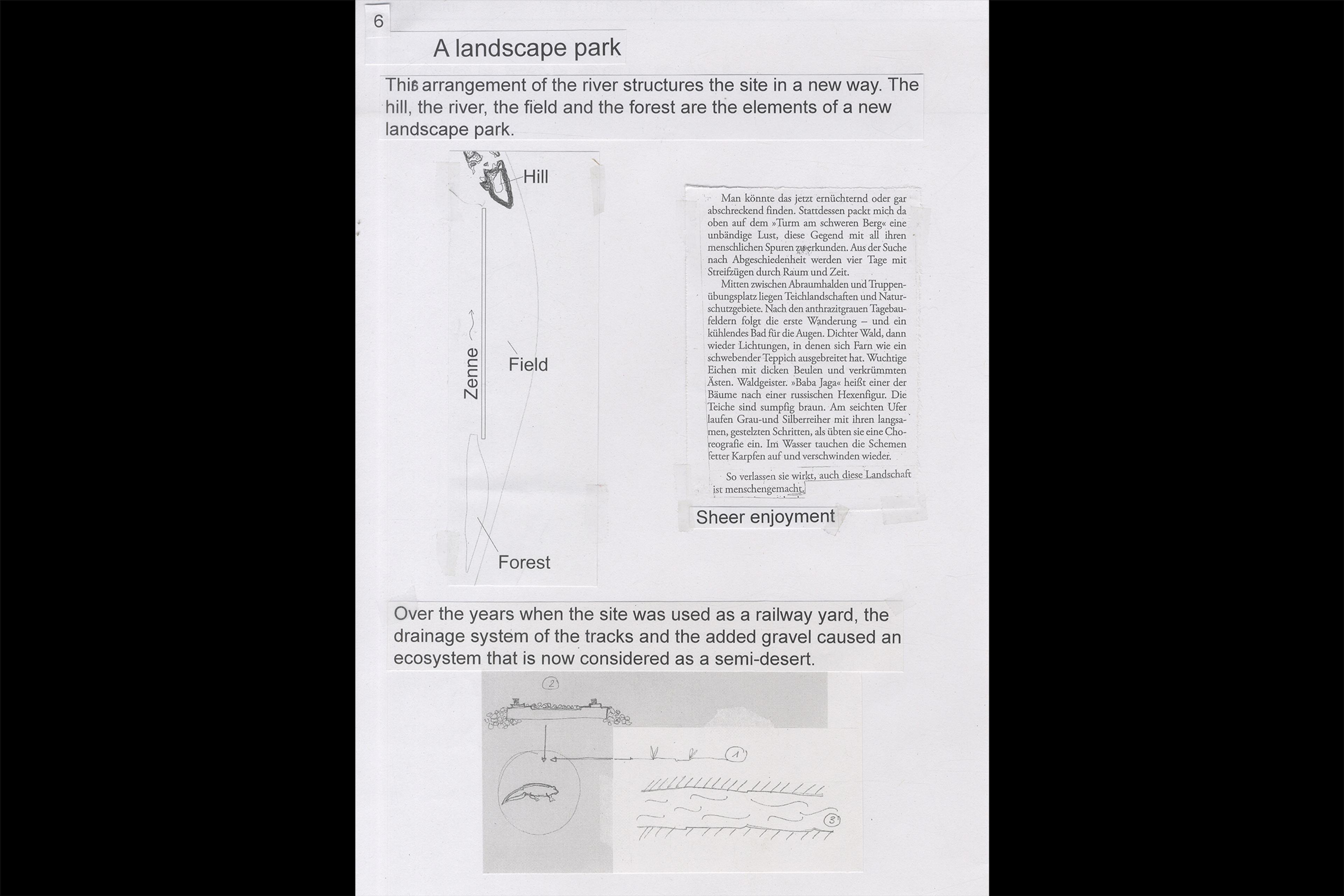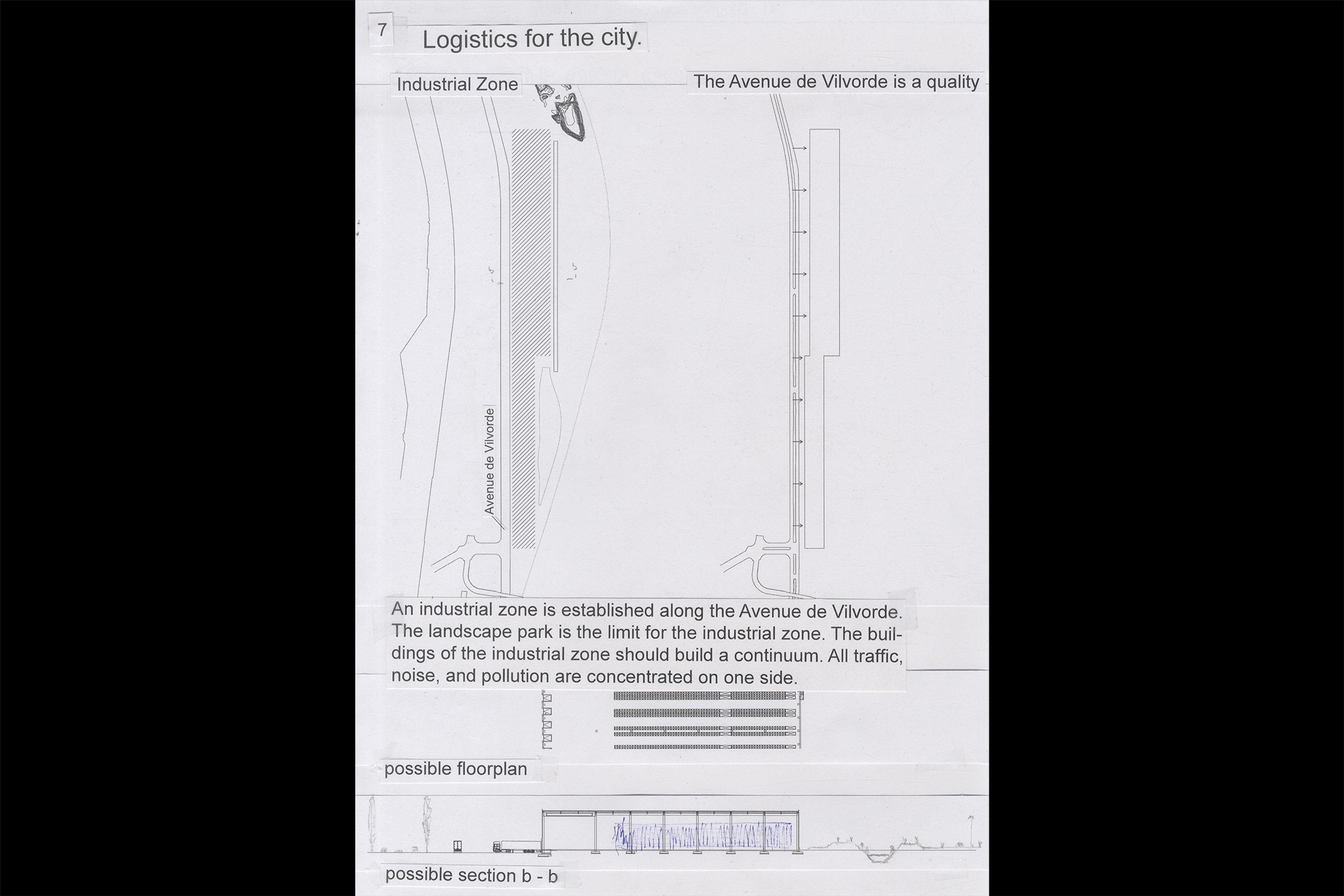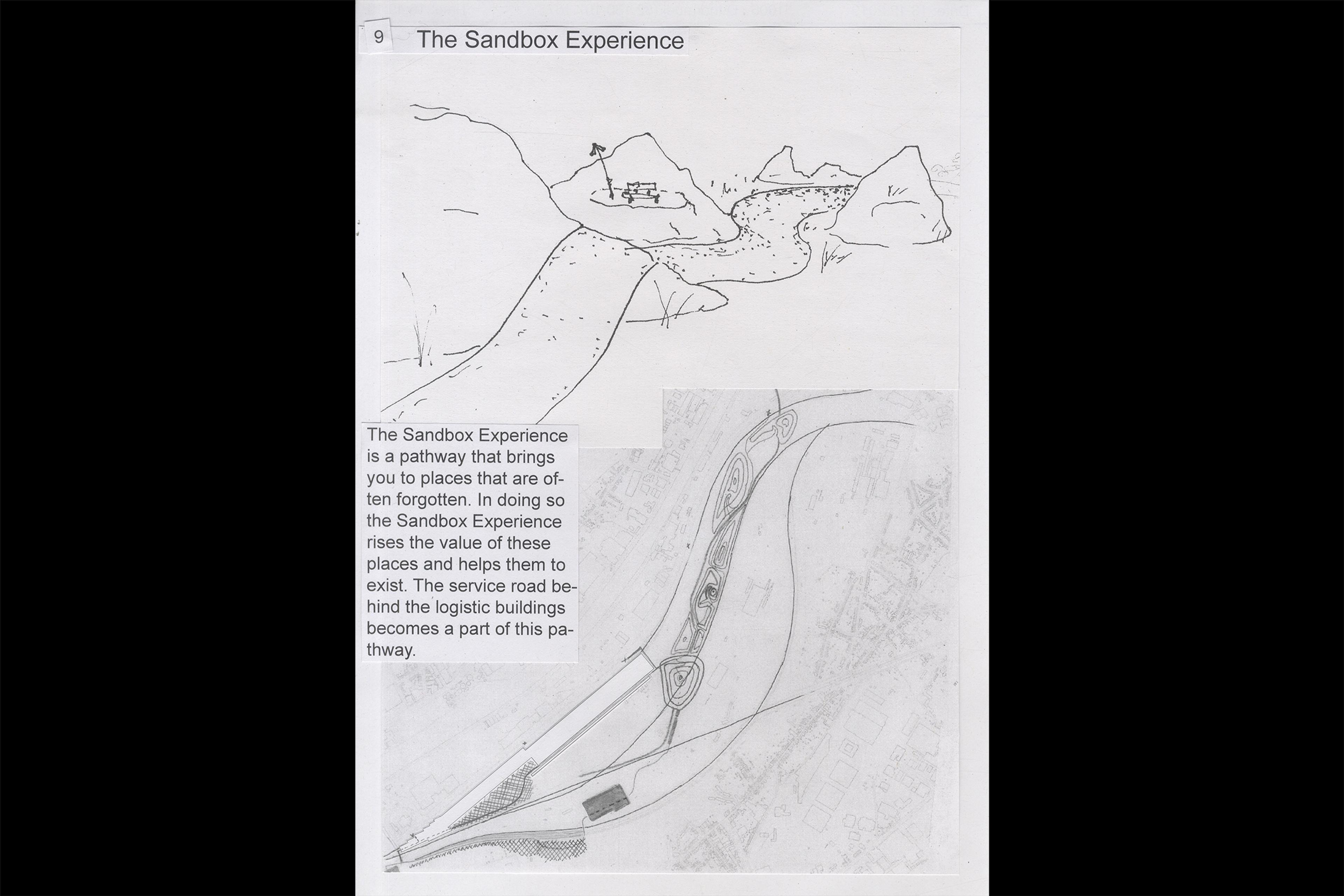Studio work Schaerbeek (Trans-)Formation
The Fall 2019 design studio centered around the transformation of Schaerbeek Formation in Brussels. Confronted with a real and complex situation, students were working in groups and were developing their own position. This kaleidoscopic approach resulted in a diverse output, consisting of eight different projects. Here you can read more about Studio Brussel - Schaerbeek (Trans-)Formation. By scrolling down you can explore the projects.
Circular EconomySereina Fritsche, Alissa Luks, Zoé Rüttimann
Everyday there are buildings being built, retrofitted and destroyed. In Switzerland there are 15 million tons of construction waste every year, which corresponds to 50’000 single family houses. Not only Switzerland is confronted with this issue. We build as if our resources were unlimited, but they are not. 36% of the waste production in Brussels comes from thedemolition and deconstruction of buildings. How come we legitimize such amounts of waste considering current issues of climate change and limited natural resources?
We propose considering buildings as valuable potential resource instead of understanding them as a source of waste.Our aim is to keep materials in circulation and use them as long as possible. By reusing building elements, a large amount of grey energy is saved. To make this possible a well-organized system is needed, including communication, dismantling, transport, storage etc. We therefore introduce “ 18 approaches to circularity”. To encourage the mentality of reuse in a bigger scale, we have to make its possibilities and environmental, economical and cultural benefits known. Let‘s take responsibility together and reuse!
Industrial Education HubBéla Dalcher, Marco Landert
During our trip we heard repeatedly about the ambition of the government to introduce employment programmes for low-skilled workers. The short-term approach of this demand was irritating and led us to investigate the causes. The current situation in Brussels is that industry lacks qualified personnel for specific tasks. In the industrial sectors, new dynamics, regarding sustainable production are developing that will require new knowledge.
We therefore propose a simple calculation to allow a long-term valorisation: Education + Industry.
Schaerbeek Formation is ideally located between the city, industrial areas, the canal and the railway, which makes it a potentially ideal mixed-use area. Our project positions itself physically and mentally in the midst of these circumstances. The building combines a school, research labs, start-ups and a material recycling plant. It has shared and open spaces to encourage cohabitation and random encounters. By concentrating knowledge and making it visible, new collaboration between different skills is favoured.The building serves as a gateway between the city and Schaerbeek-Formation, as well as a catalyst for knowledge transfer between different disciplines and the future development of the site.
The SandboxLucie Delacoste, Matthieu Schwartz
“The Sandbox” project is an invitation to embrace Schaerbeek-Formation. It re-considers the site for what it is – an existing valuable resource, rather than a vacant space waiting to be turned into something. Schaerbeek-Formation is full. Full of material, life, sounds, emotions – built and unbuilt. There is no need to add or remove anything from the site, it is a matter of transforming the existing.
Our proposal aims to reveal the character of the site by highlighting and connecting different existing environments to a new ecosystem. A path creates the link. The experience along the way seeks to transform your perception: There is no wasteland!
Concerning WaterTakuma Akaki, Vasco Medici
Concerning Water is looking at the history of water in Brussels and tries to reveal its hidden potential. Investigating the waterscape in the past can help to repossess it as a shared value for the future.
The history of Brussels is closely related to water. Even its name comes from the Dutch word “broeksel”, meaning “house in the swamp”. Due to the presence of several streams and the river Senne, the site of Schaerbeek-Formation previously was a giant swamp with constantly occurring floods. During centuries, the citizens developed a system to take control over and advantages from water, which was used as an economic, social and ecological resource. In 1862 the city’s authority decided to cover the waterscape due to hygienic justification removing most of the amenities related to it. Schaerbeek Formation is an exemplary site for this change: from being shaped by water as former swampland there is no sight of water anymore today.
Controlling and possessing water is a questionable mentality. We want to rediscover it as an element to co-exist with. We need a shift from a situation where water is strongly controlled or even suppressed to one where water is seen as an element that enables symbiotic situations with its social and spatial environment. Schaerbeek Formation has the potential to become an exemplary site in this transition!
Public Production – A ToolboxAleks Skop, Nathalie Reiz, Marco Steinacher
How public can production be? How productive can public space be? If we want to integrate industry in the city, we have to find new ways to design vibrant public spaces in productive areas: Spaces where citizens and workers can enjoy their city, areas where leisure and work can co-exist, industrial streets which are not defined by closed boxes and fences. Public space should not end at the borders of productive sites, it should start there.
In our project we started from understanding what public space is and how it works. As a next step we established a toolbox and applied it at various sites along the Canal in Brussels.
Utopia IslandWiebke Gude, Lea Hartmeyer, Patricia Pervan, Julian Rickenbacher
Almost all decisions concerning the future of Schaerbeek Formation are made behind closed doors, in rooms where a handful of stakeholders try to find common ground. Negotiations about such large urban areas, whose transformation will directly influence the lives of many citizens often take place without them noticing, let alone getting the chance to participate. We therefore want to open up the space in which these discussions are held and questions about the city are discussed in equal dialogue between policy makers and Brussels citizens. Hence, we want to create this space on Schaerbeek Formation by forming a collective that creates and designs the open spaces on site. In doing so, we take on the role of activists bringing the site closer to the citizens of Brussels.
Activism often makes use of utopian thinking as it is rooted in a strong desire for change and a search for alternative proposals that have the power to overcome limitations and the status quo of existing systems.
We make use of utopian thinking to:
1. Establish a manifesto and claims for the site of Schaerbeek Formation, namely the preservation and appreciation of vast, open, shared urban space for festivals, recreation and leisure
2. Make up campaigns, intended to emotionally trigger citizens by both evoking desire and aversion
3. Form a collective called Newtopia.Brussels which acts on the site and belongs to all European citizens.
infrafuture.brusselsLiam Buffat, Fabian Theiler, Gjoke Daka, Moritz Köhler
At the heart of Europe‘s logistics network, Brussels is one of the most congested cities of the continent. A considerable share of the vehicles jamming the streets are those for freight transport, polluting the air and occupying urban space on an everyday basis. Now that Schaarbeek-Formation is to be transformed into a logistic hub, how can this be made into a chance for the whole city to benefit from?
We propose a new logistic concept for the city where goods that reach the Brussels Capital Region are brought to Schaarbeek-Formation, where they are unloaded and stored. From there they are transported further to sub-centres all over the region in bunches.Smaller (electric) vehicles are used here so that the city is not polluted by heavy truck traffic; they make tours through the city connecting the sub-centres so they avoid running empty. Last mile delivery is done by cargobikes and other environmentally friendly means of transport.
The subcentres are not only logistic hubs, but also centres of production, education and sale for their respective area. Acting as social and daily-life centralities answering to the specific local conditions, they become a benefit for the respective neighborhood.
To wake up in NewropeThorben Müller
“How to explain my project? I Would like to write here a bit. How is my project called? The professor called it ‘Logistics in/for the city’. I like the name somehow. Because it is somehow clear and on the other hand it’s very open.
I like to start with a dualistic situation that is shown on one of the very first prompt cards we’ve got at the beginning of the semester. There is production on one side and on the other side there is ecology. In a very polemic way production is shown in red and ecology in green.
I think production stands for everything that is in the ‘value chain’ of our society. Not only production in the way that something is directly produced, like in a factory, but everything that is manmade (like schools, streets, housing, windmills, a cow field, a public park, etc.).
Directly opposite is the colour green. This should, therefore, be an area that is protected from any exploitation by mankind. Here mankind plays a subordinated role.”
I wrote this text weeks ago. Now I have to add to it or correct it. My project was never about the division of production and ecology. It is about the opposite: Production and Ecology! How can we combine them? How do we deal with our land in order to make sure that there is also an ecological quality? And at this point the journey just started. That is probably what I try to show with my little book called “To wake up in Newrope”. This book starts with Ecology and Production as already existing on the site. But it is our task to define and discuss them!
